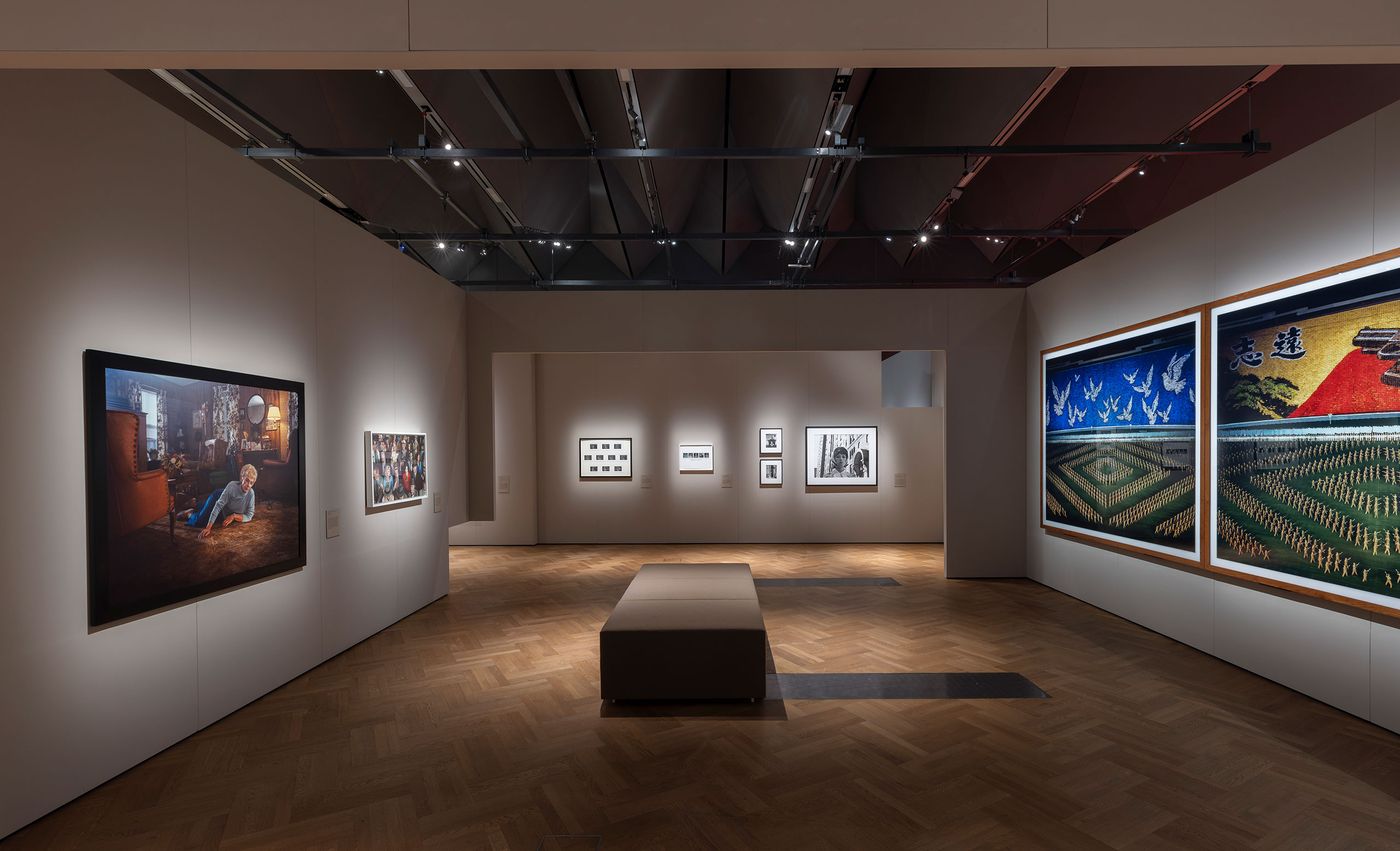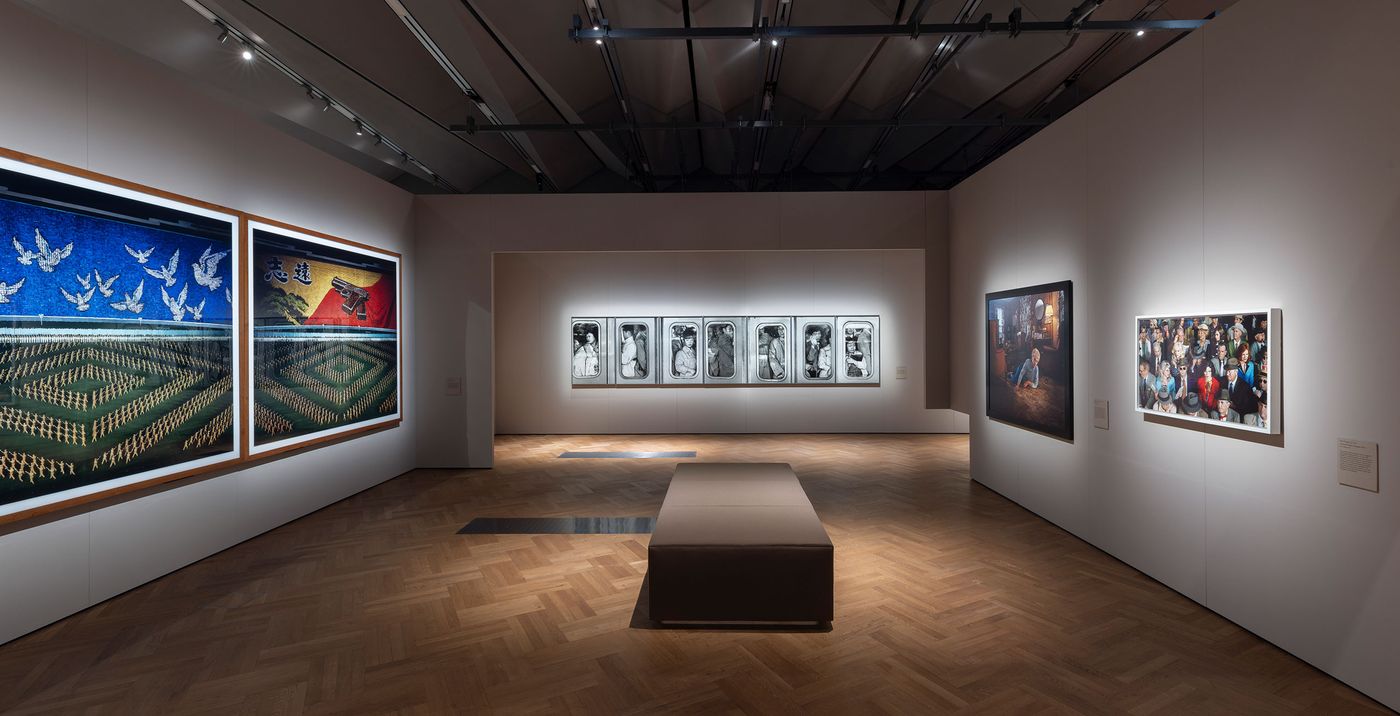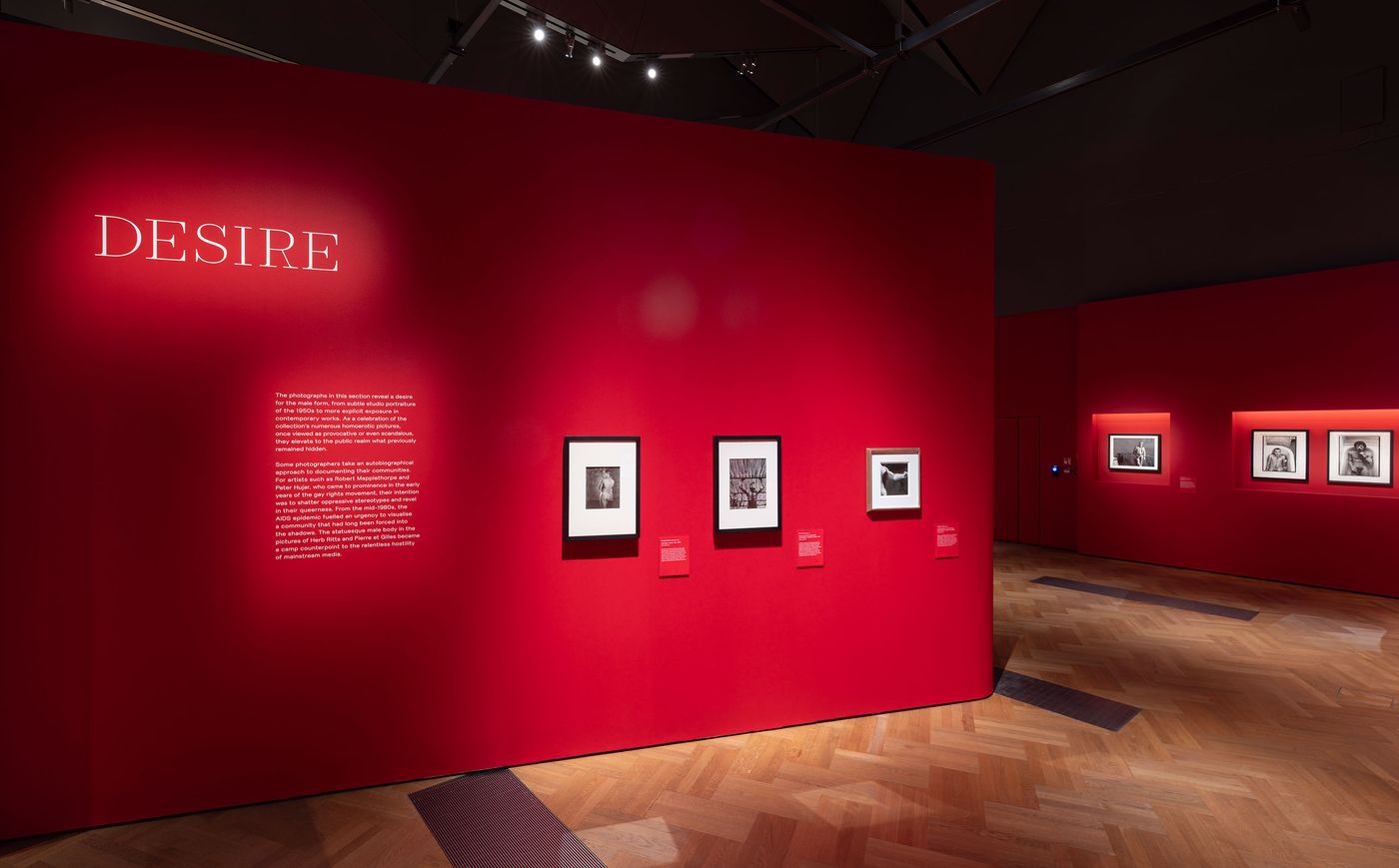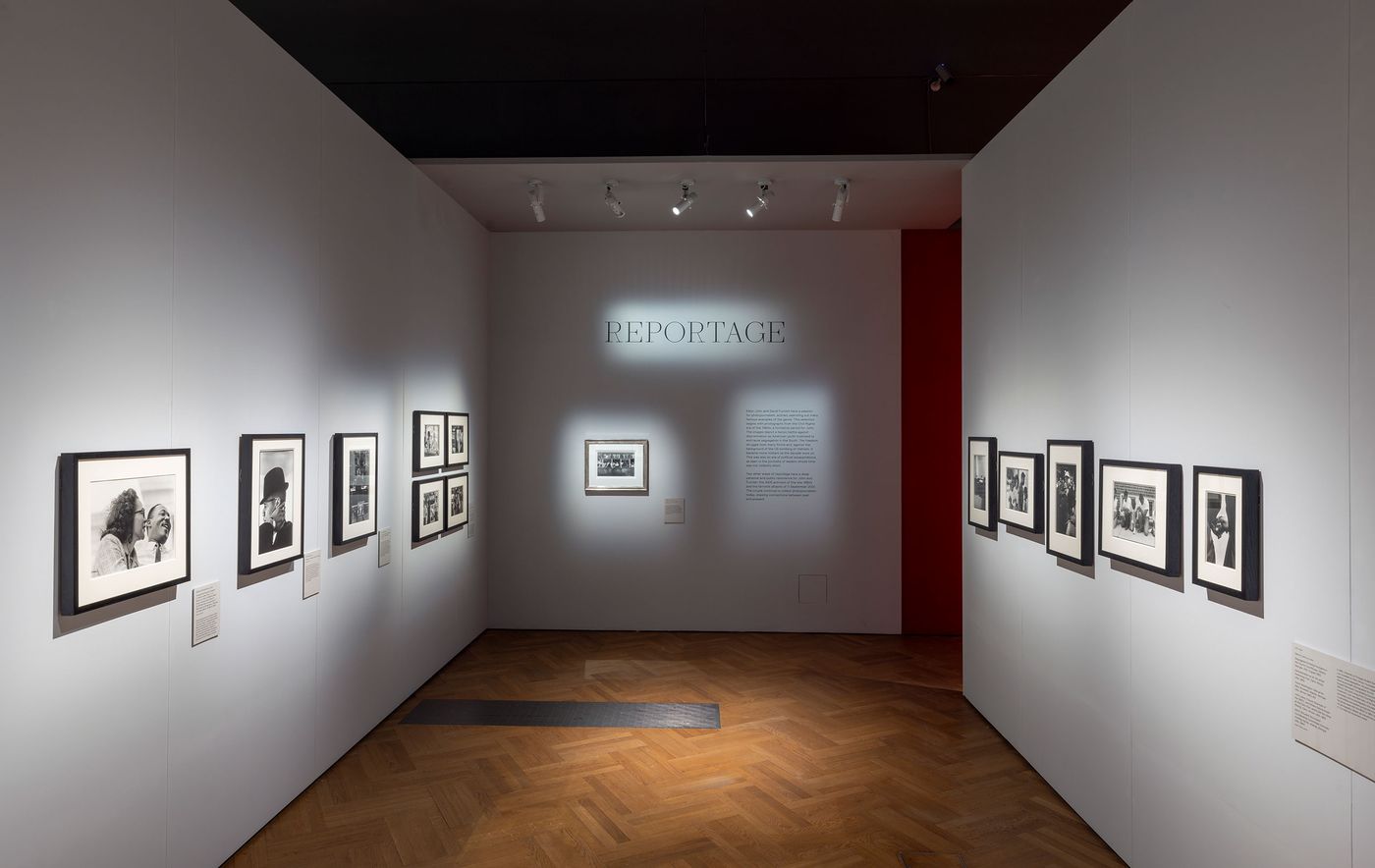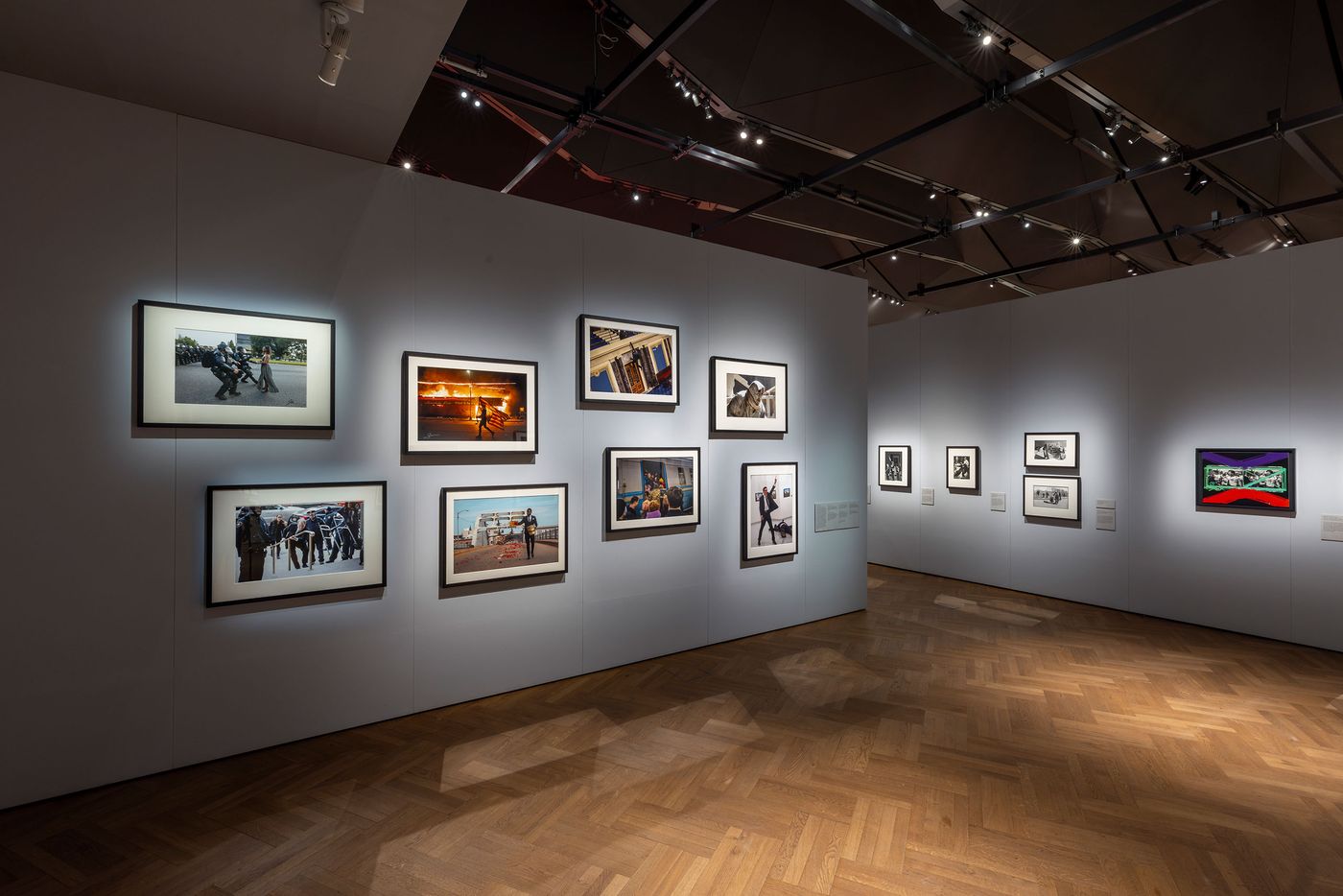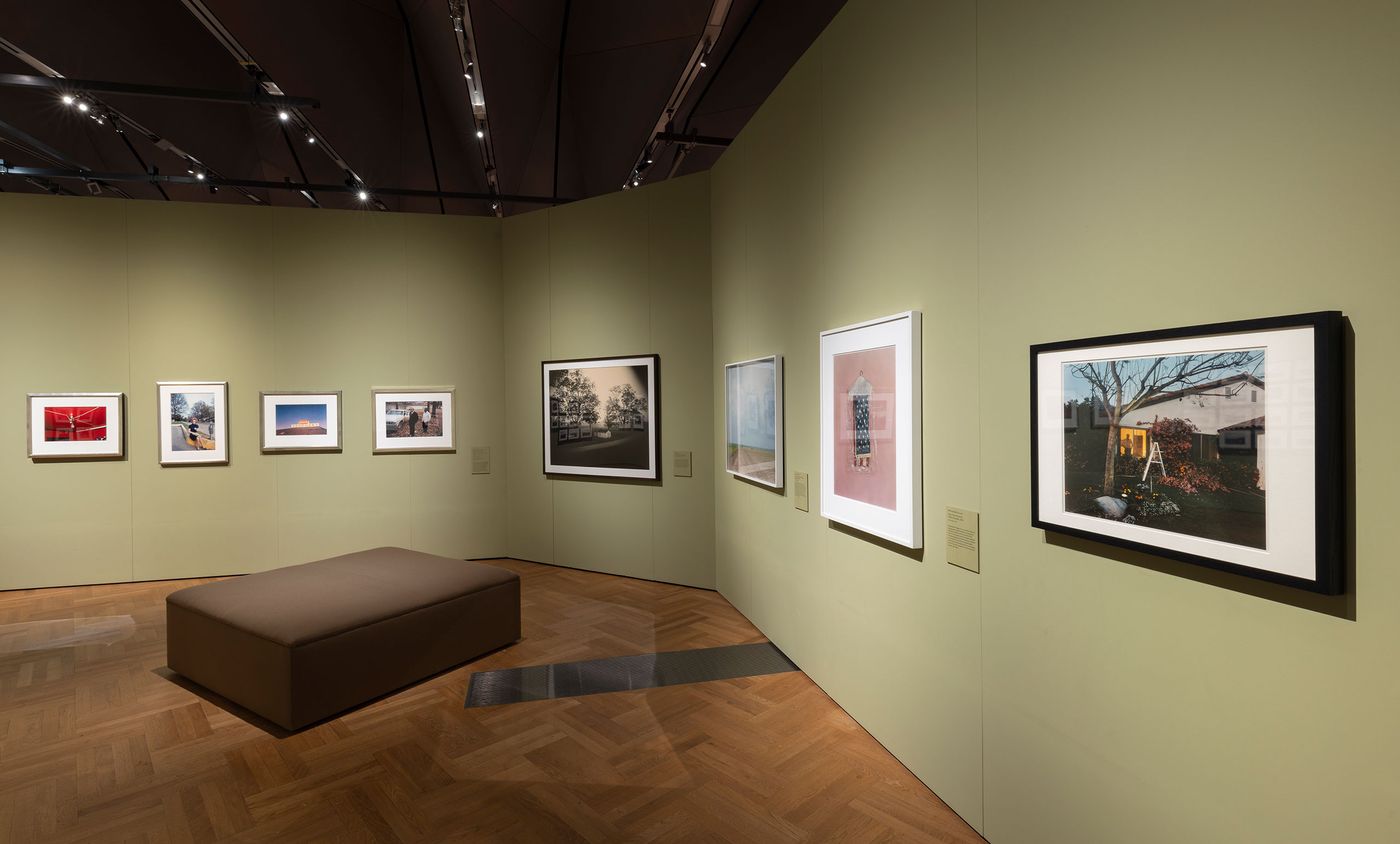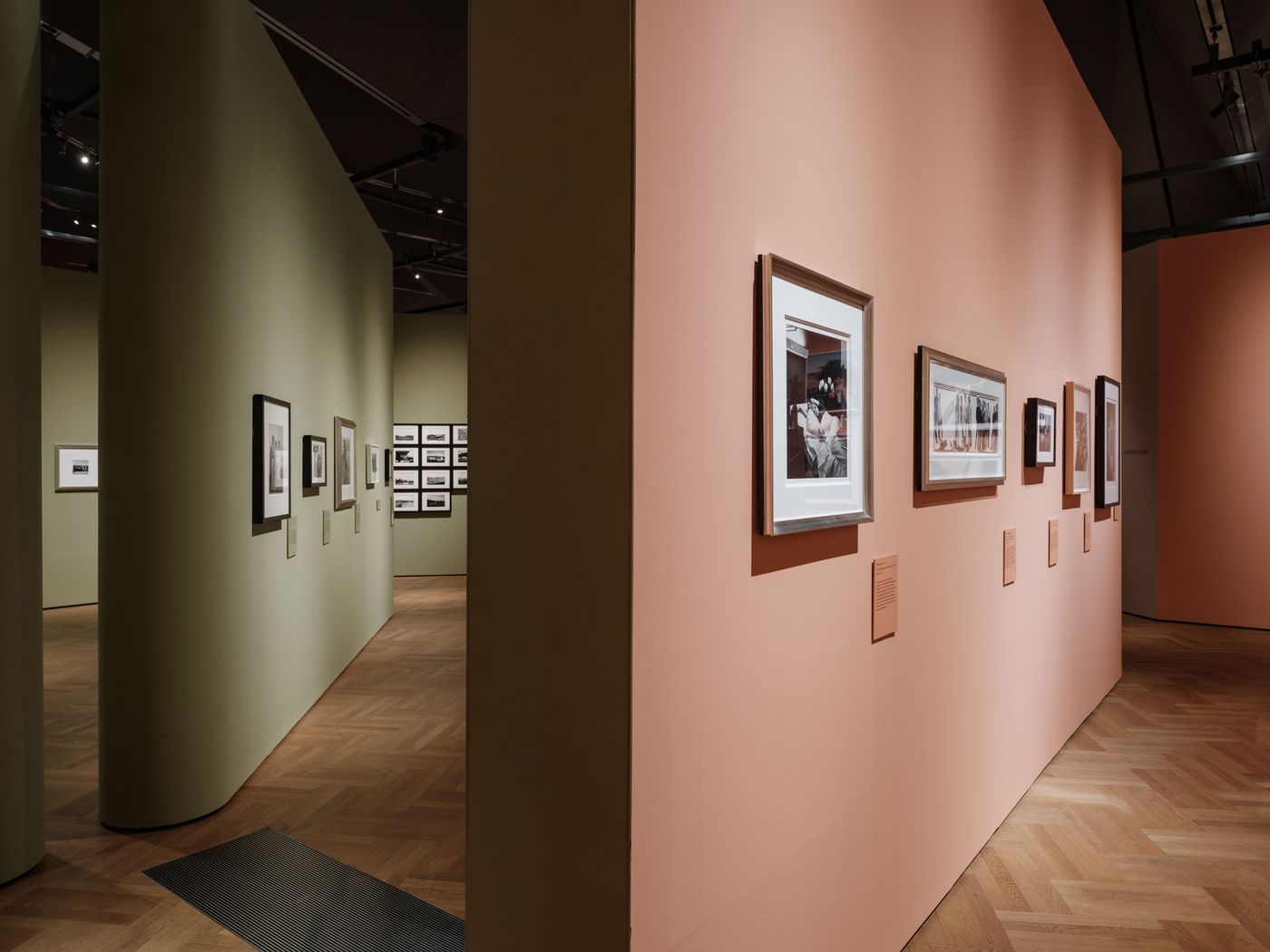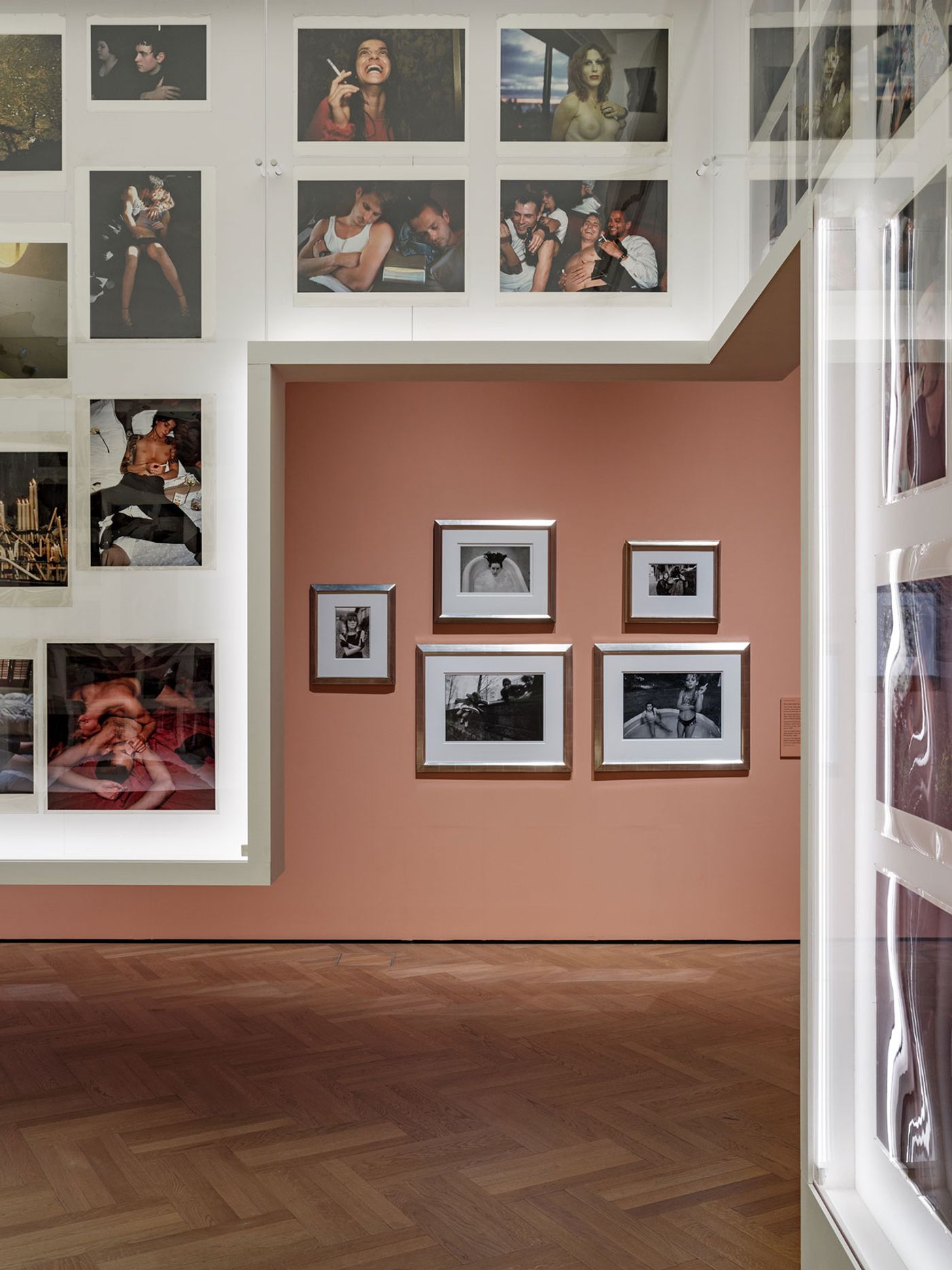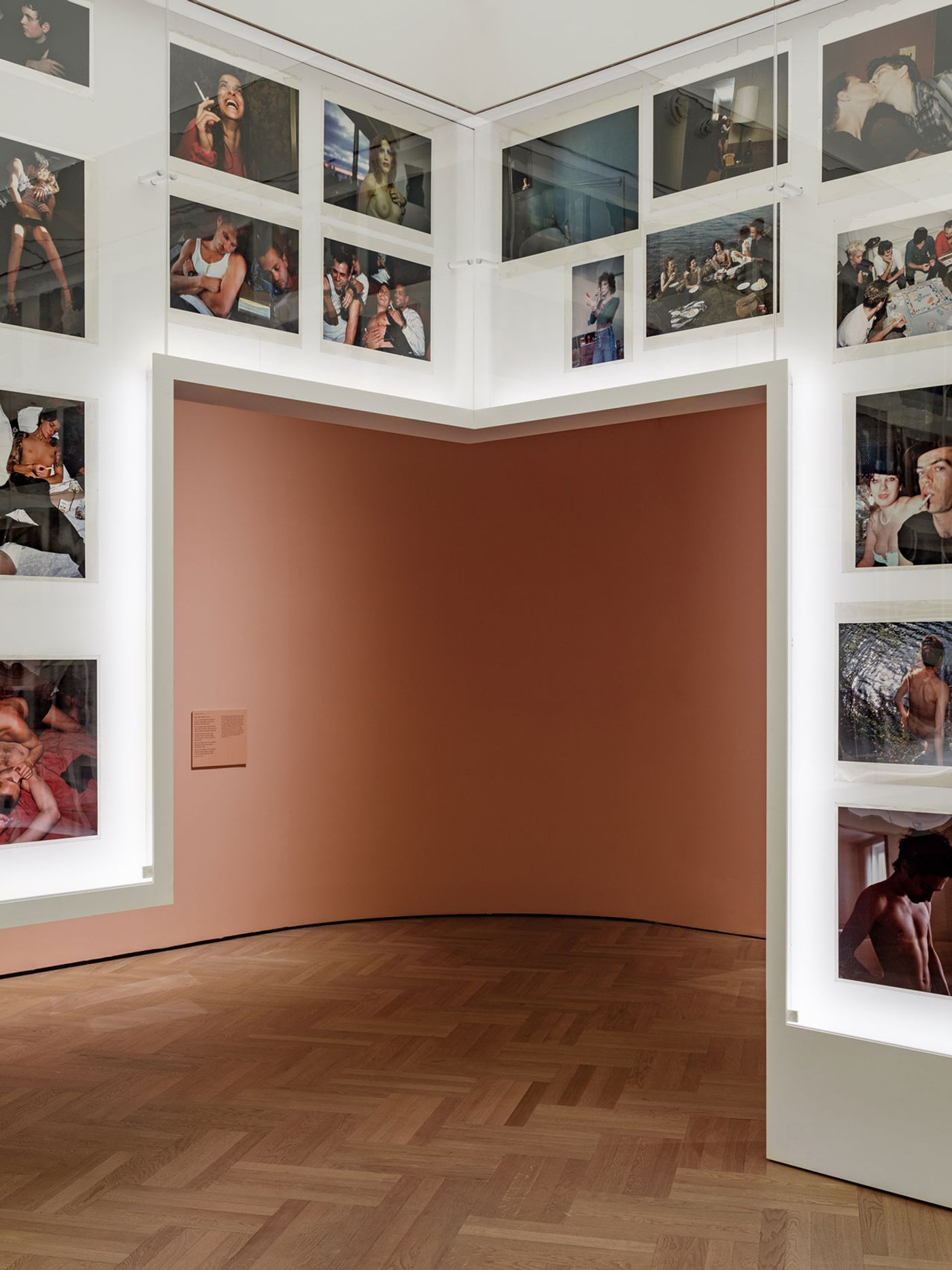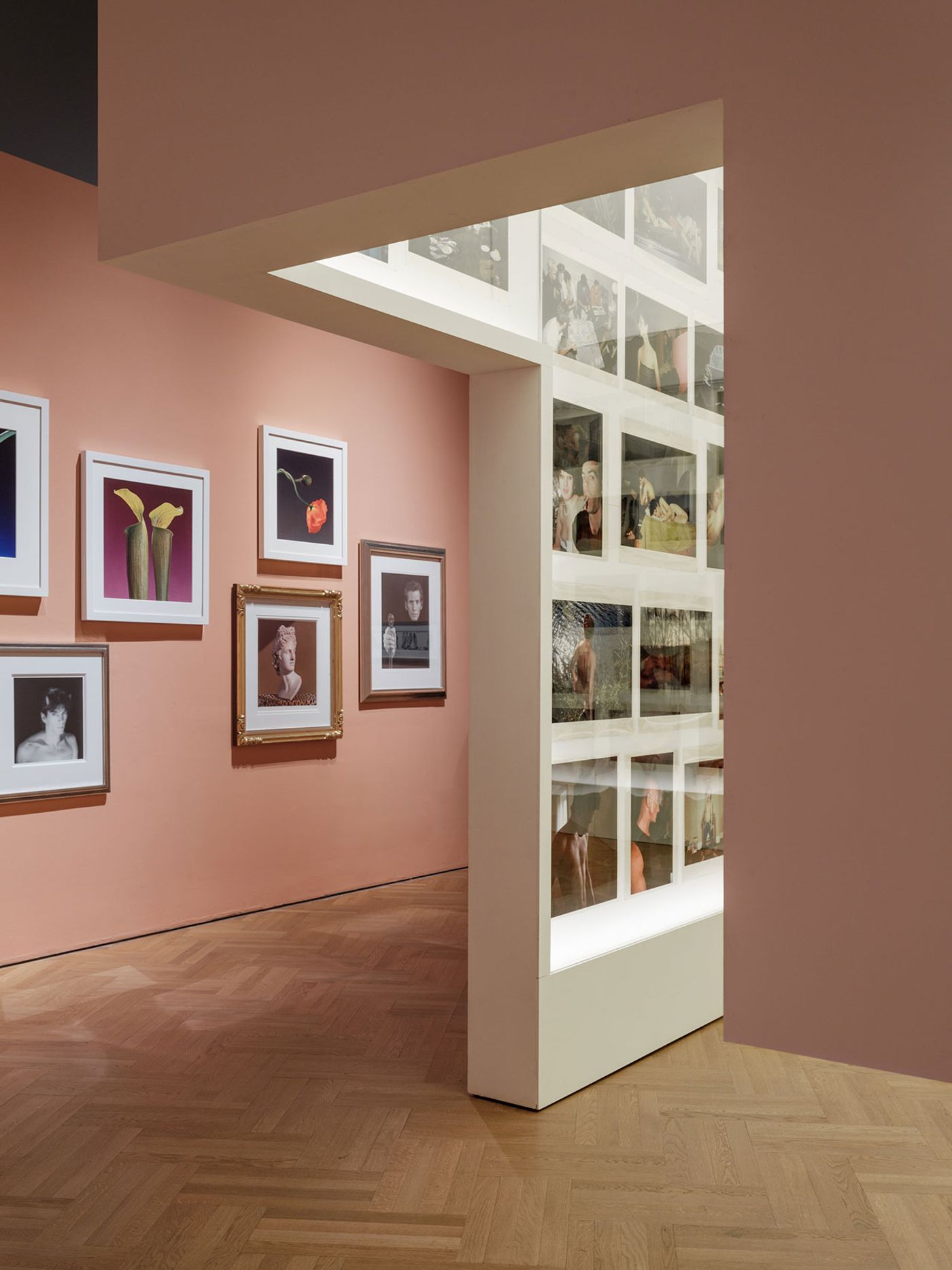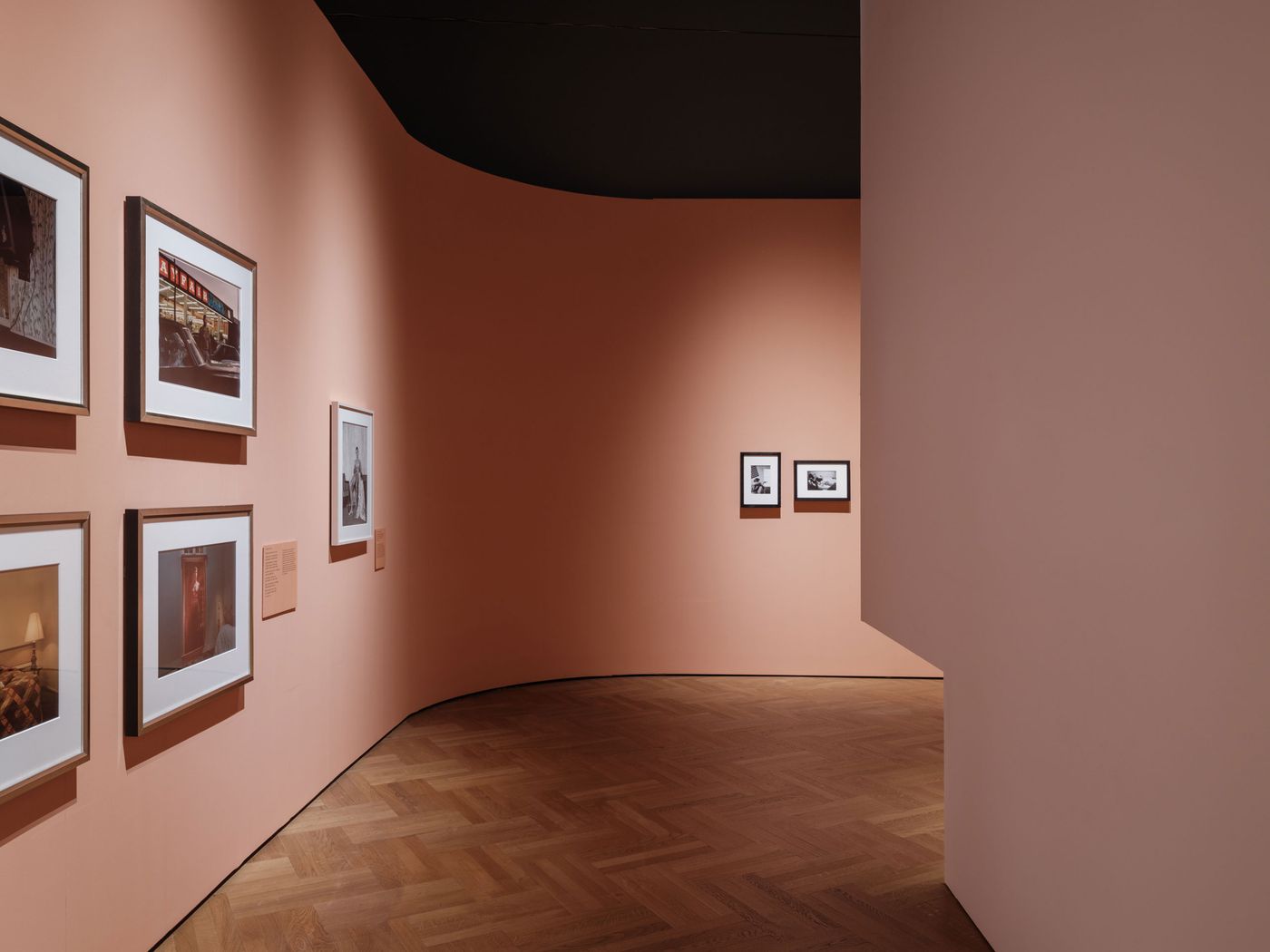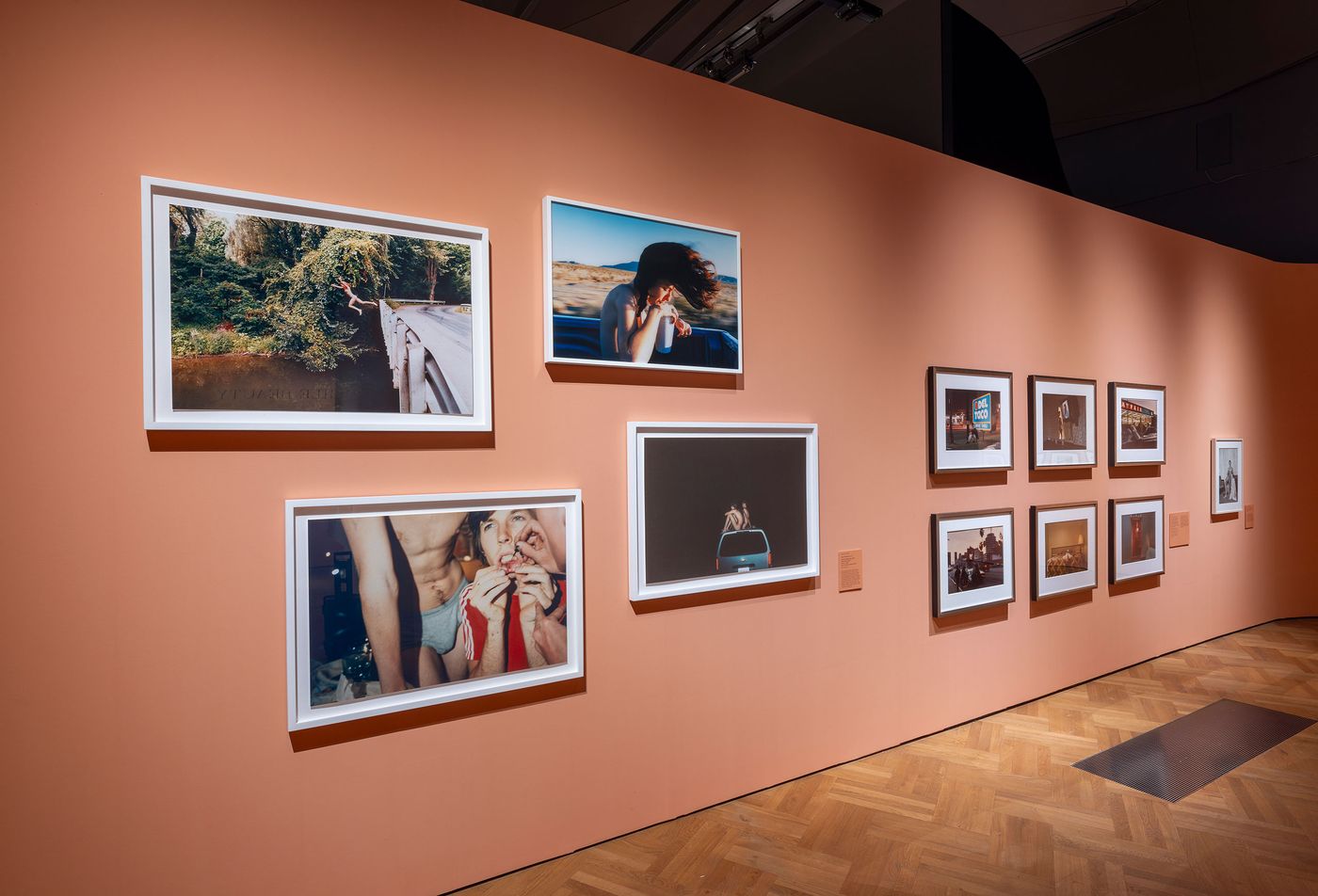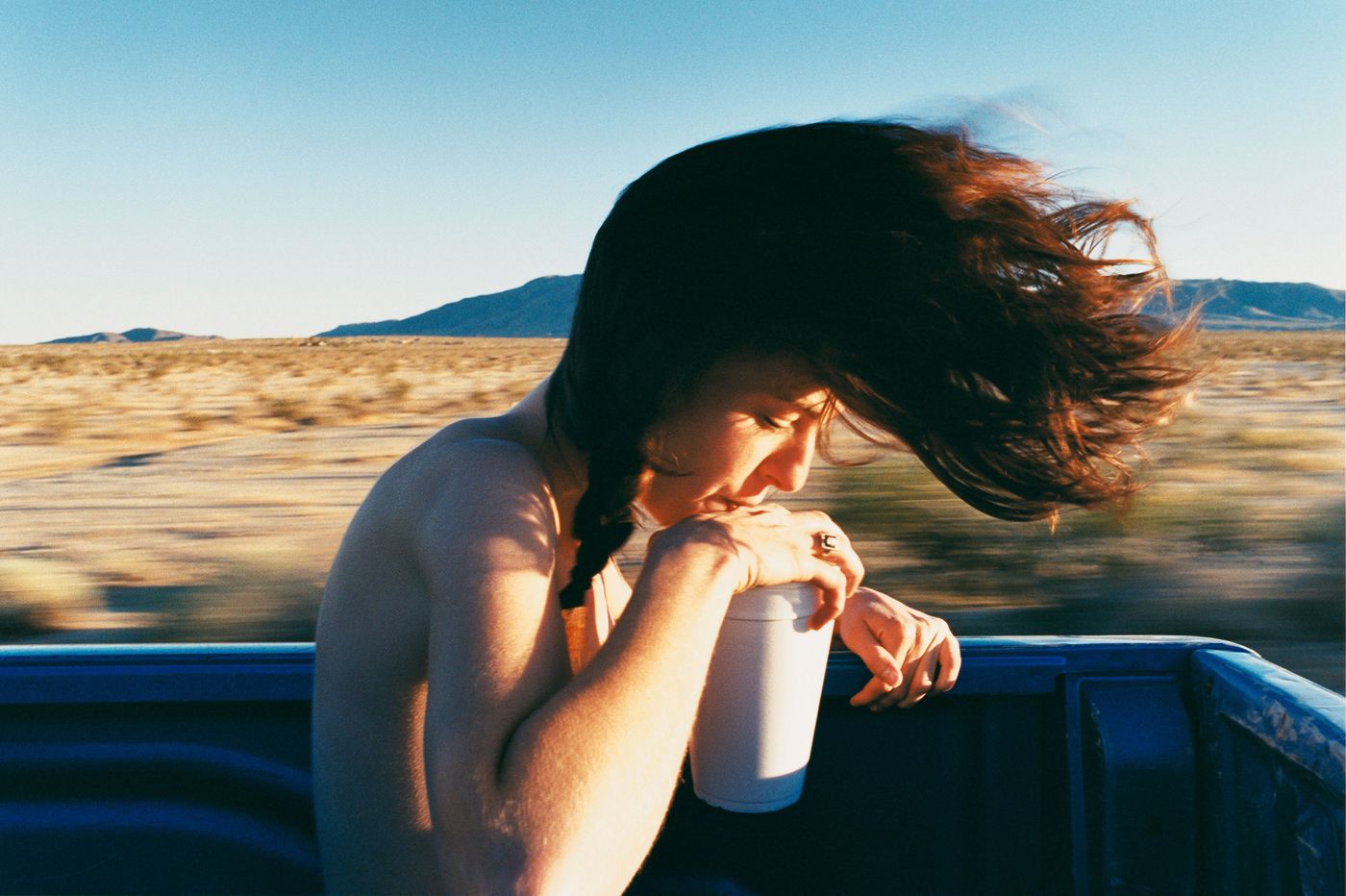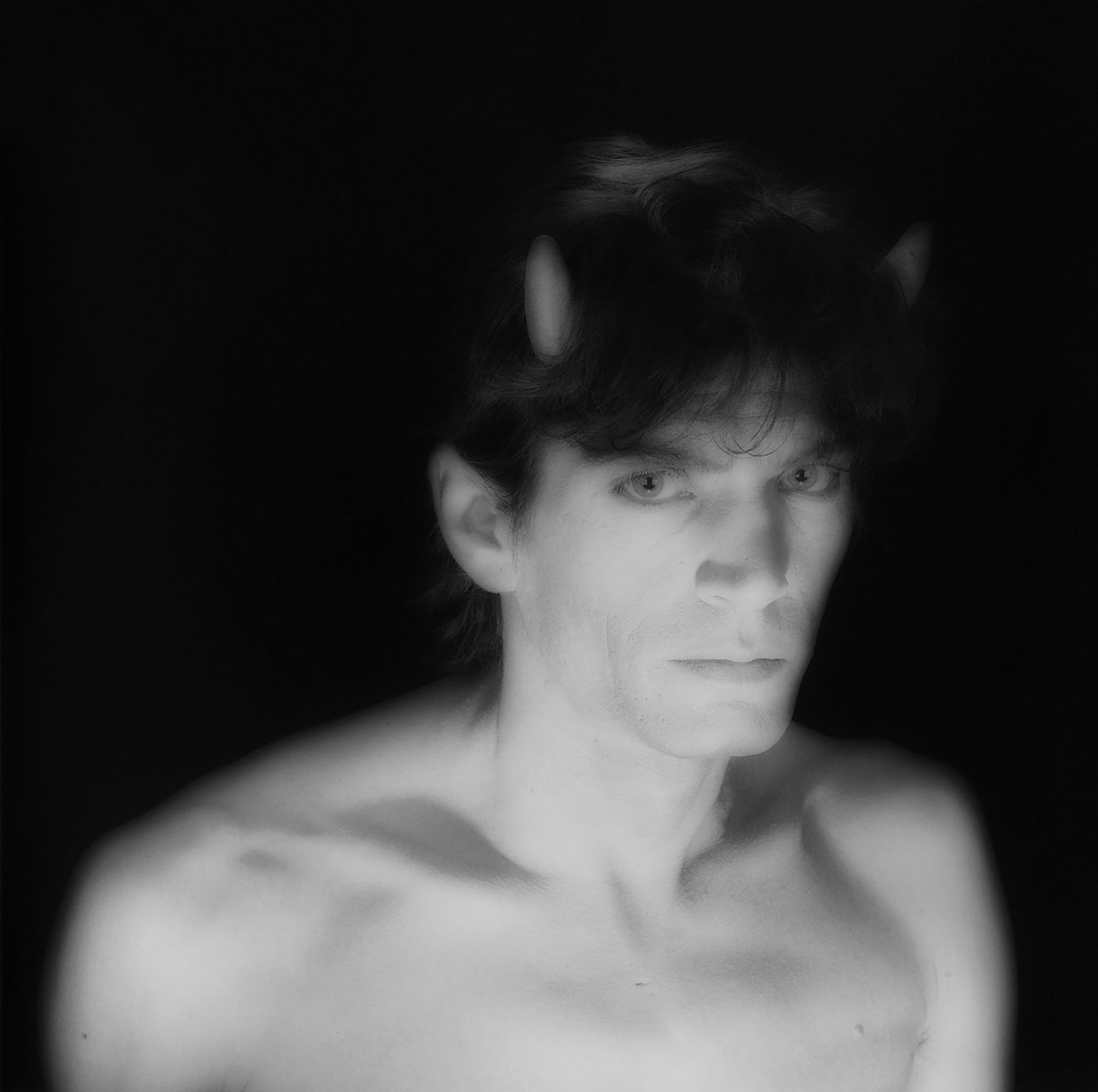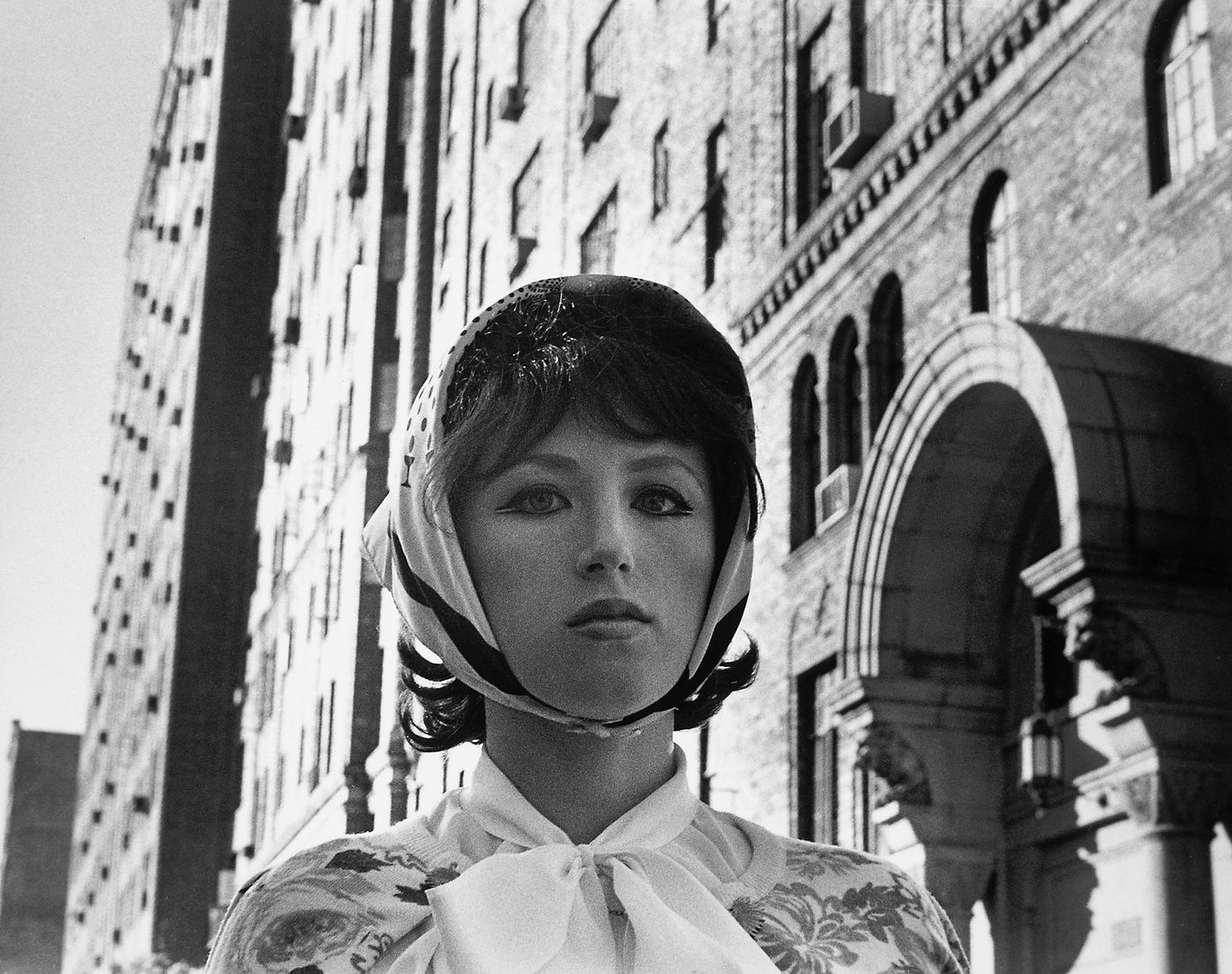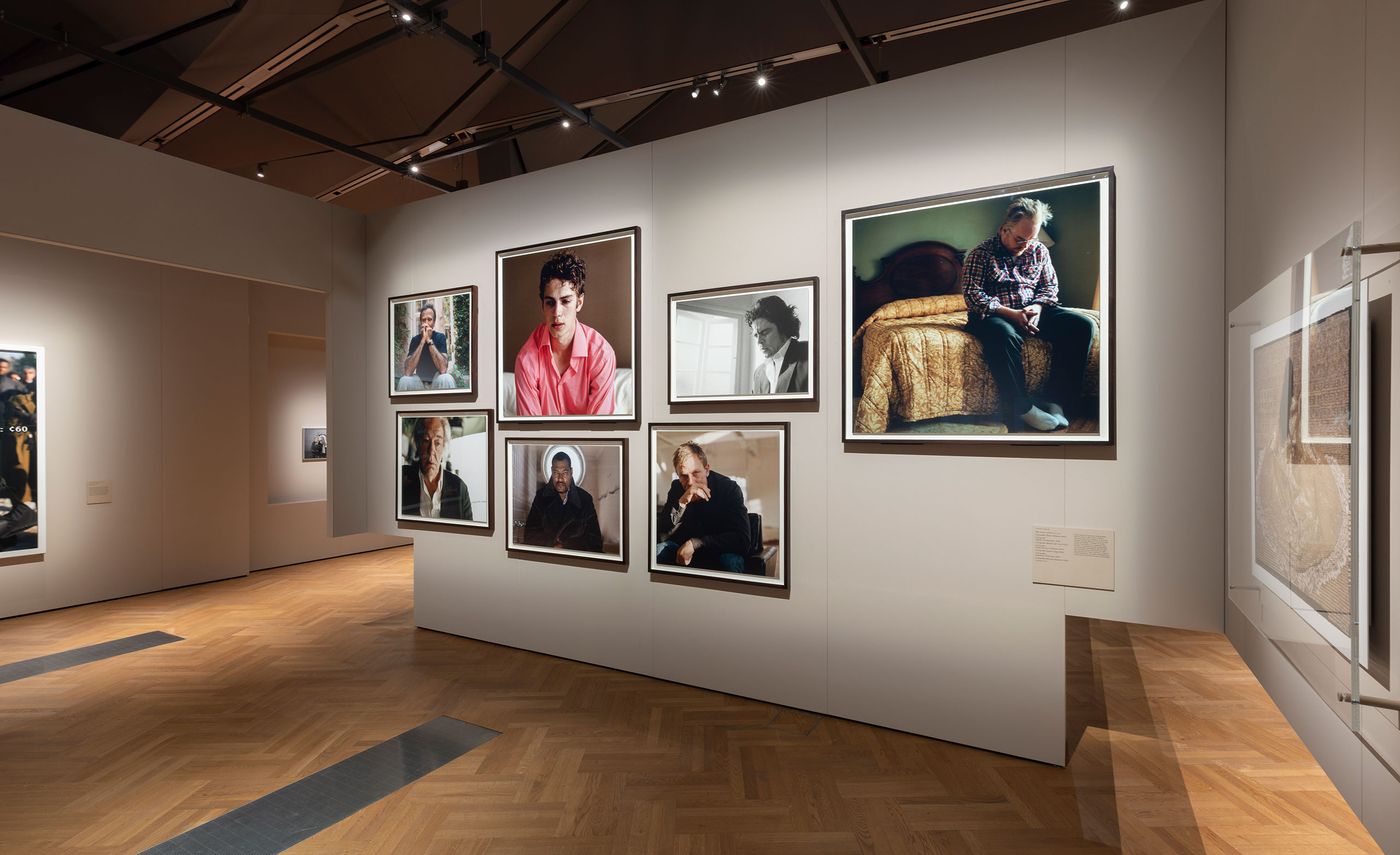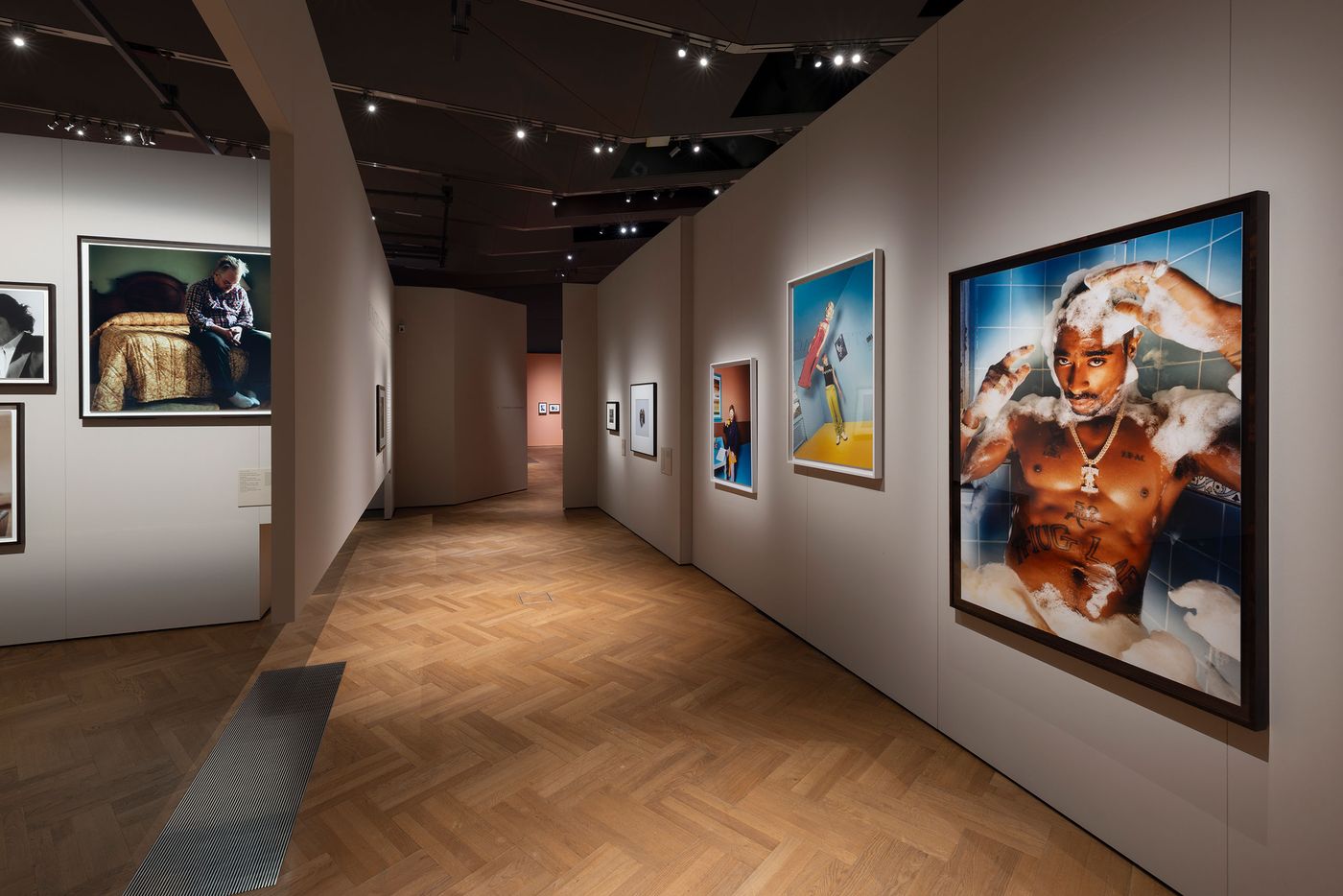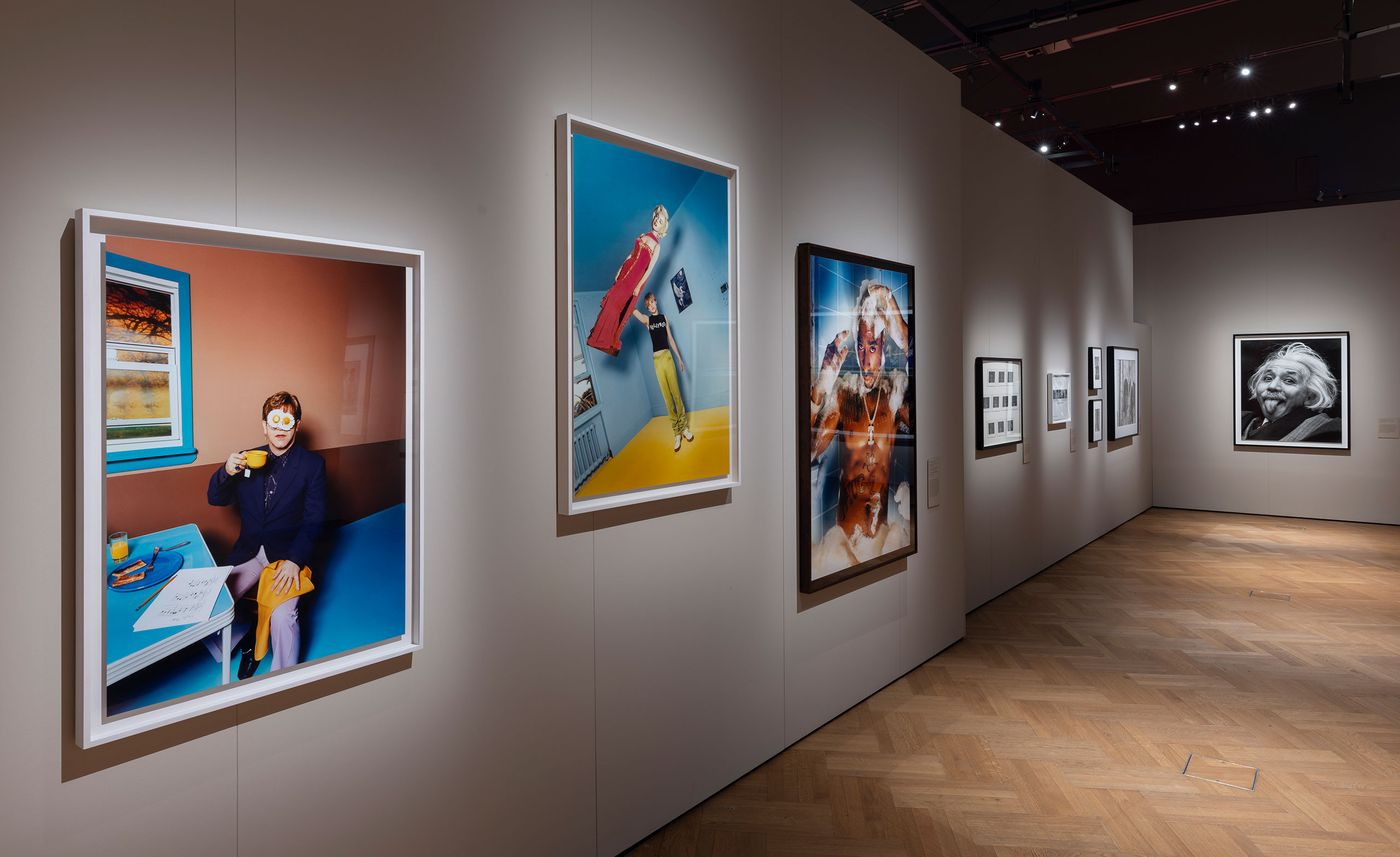
Fragile Beauty: Photographs from the Sir Elton John and David Furnish Collection at London's V&A
Words by Eric David
Location
London, United Kingdom
Fragile Beauty: Photographs from the Sir Elton John and David Furnish Collection at London's V&A
Words by Eric David
London, United Kingdom
London, United Kingdom
Location
How do you go about selecting 300 photographs out of a treasure trove of over 7,000 images by the world’s leading photographers? This was the challenge that the curators of the V&A’s latest photography exhibition grappled with when setting up “Fragile Beauty: Photographs from the Sir Elton John and David Furnish Collection”. Given that Sir Elton John and David Furnish’s private photography collection is liberally displayed across every wall of their house, which the curators were given full access to, it’s only fair to surmise that the curatorial process must have been quite fascinating, a word that also applies to the exhibition itself.
Ranging in theme from fashion photography, to artistic portraits, to photojournalism, the kaleidoscopic selection of rare prints by 140 era-defining photographers such as Richard Avedon, Herb Ritts, Robert Mapplethorpe, Cindy Sherman and Diane Arbus explores the connection between strength and vulnerability inherent in the human condition, a central theme underpinning Elton and David’s entire collection. Covering the period from 1950 to the present day—a similar exhibition at the Tate Modern in 2016 covered the period from 1920 to 1950—the thought-provoking show, the V&A’s largest temporary photography exhibition to date, tells the story of modern and contemporary photography as well as celebrates the couple’s passion for the medium and reflects their personal taste and unique eye as collectors.

David LaChapelle, Elton John, Egg On His Face, New York, 1999. © David LaChapelle.
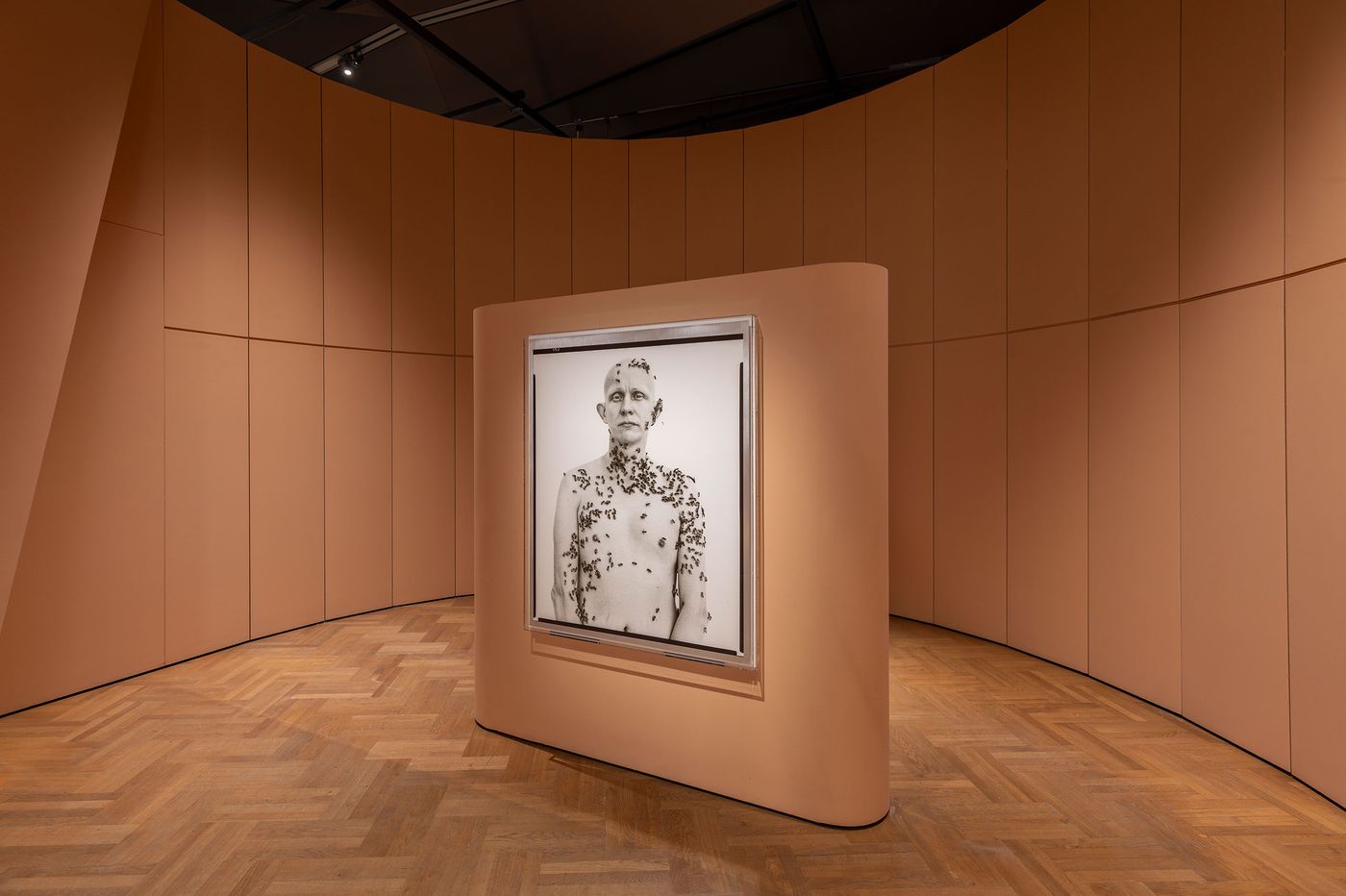
Installation view of "Fragile Beauty" at V&A, South Kensington. © Victoria and Albert Museum, London.
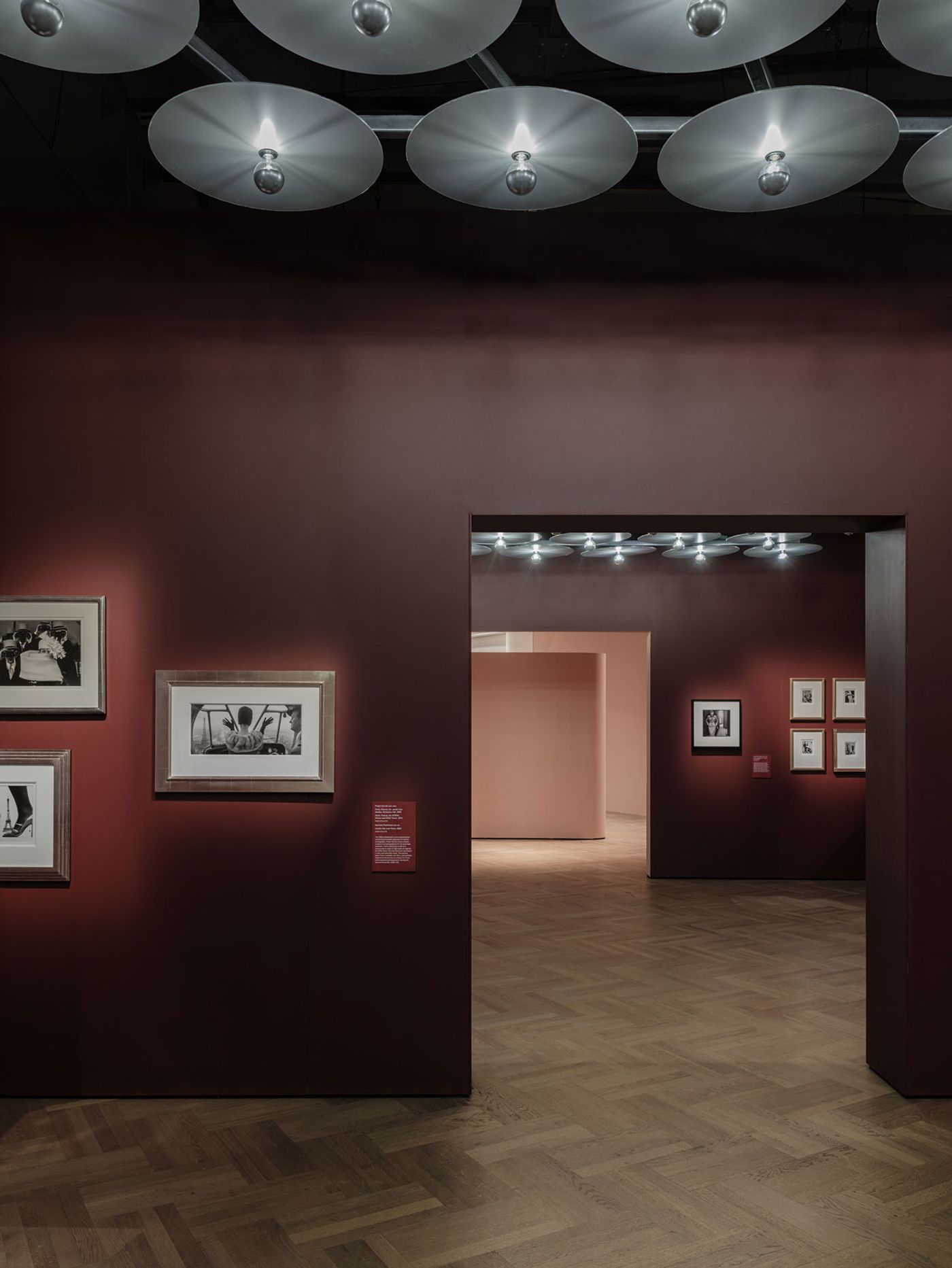
Installation view of "Fragile Beauty" at V&A, South Kensington. Photography © James Retief.
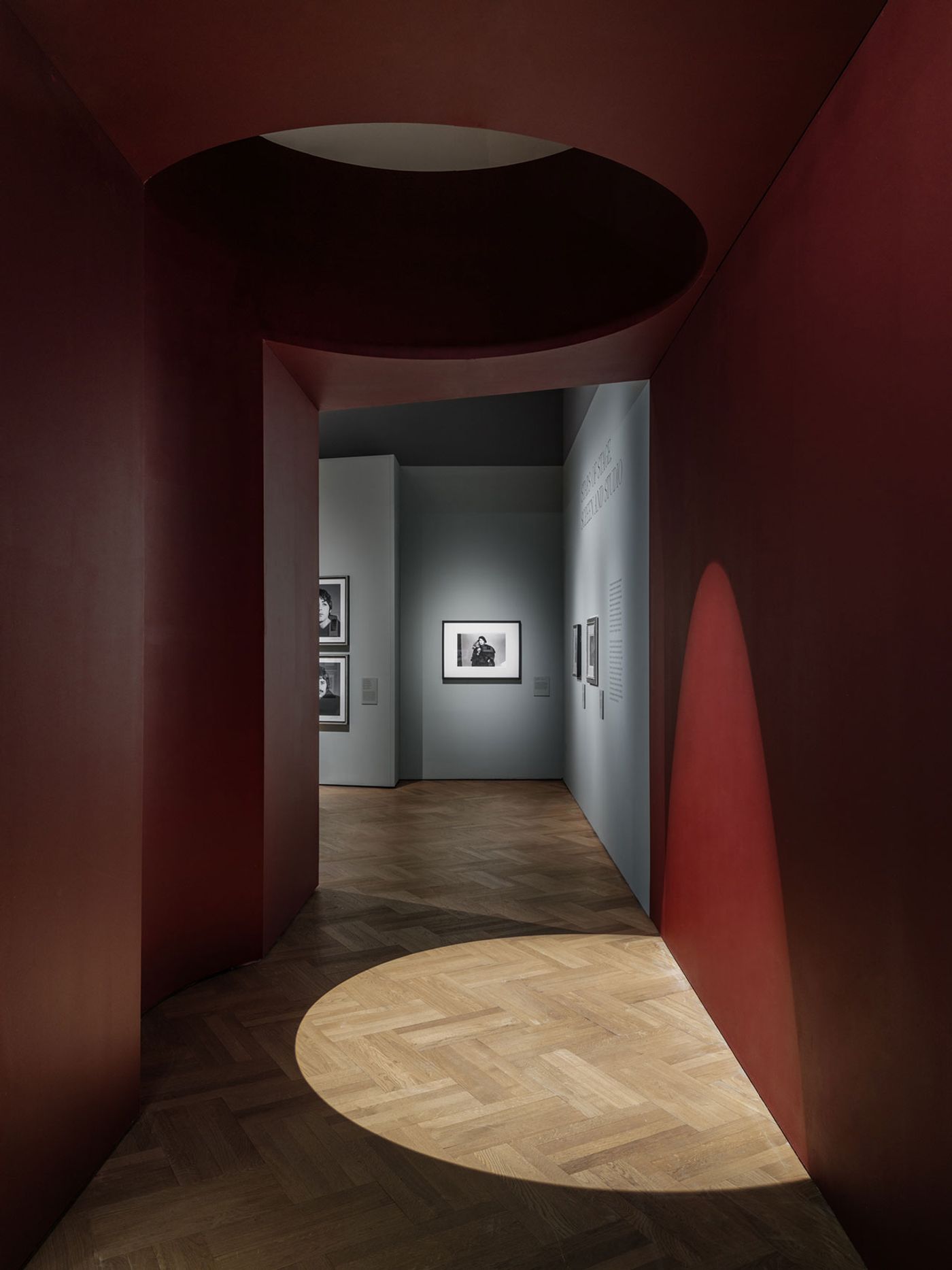
Installation view of "Fragile Beauty" at V&A, South Kensington. Photography © James Retief.
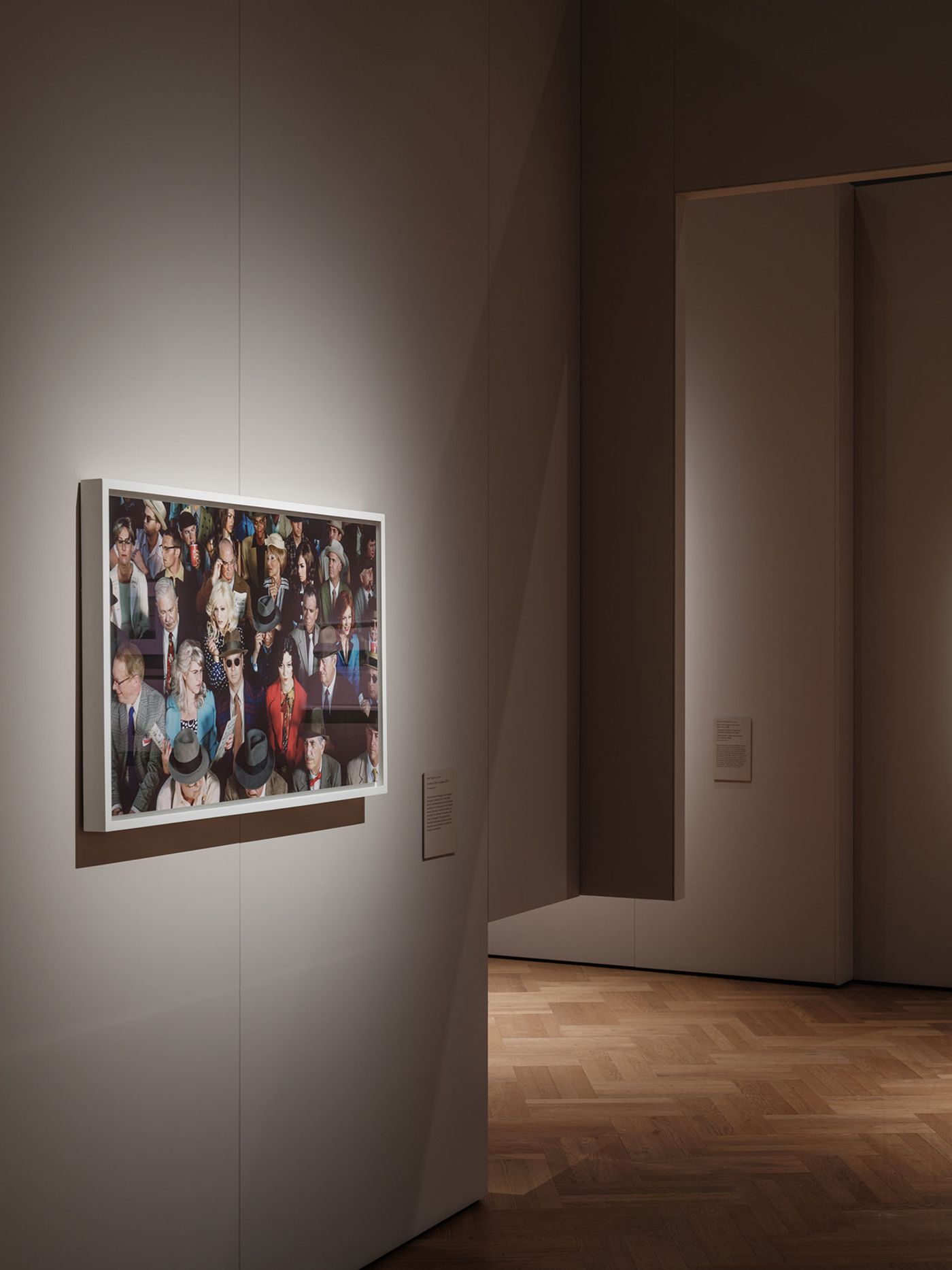
Installation view of "Fragile Beauty" at V&A, South Kensington. Photography © James Retief.
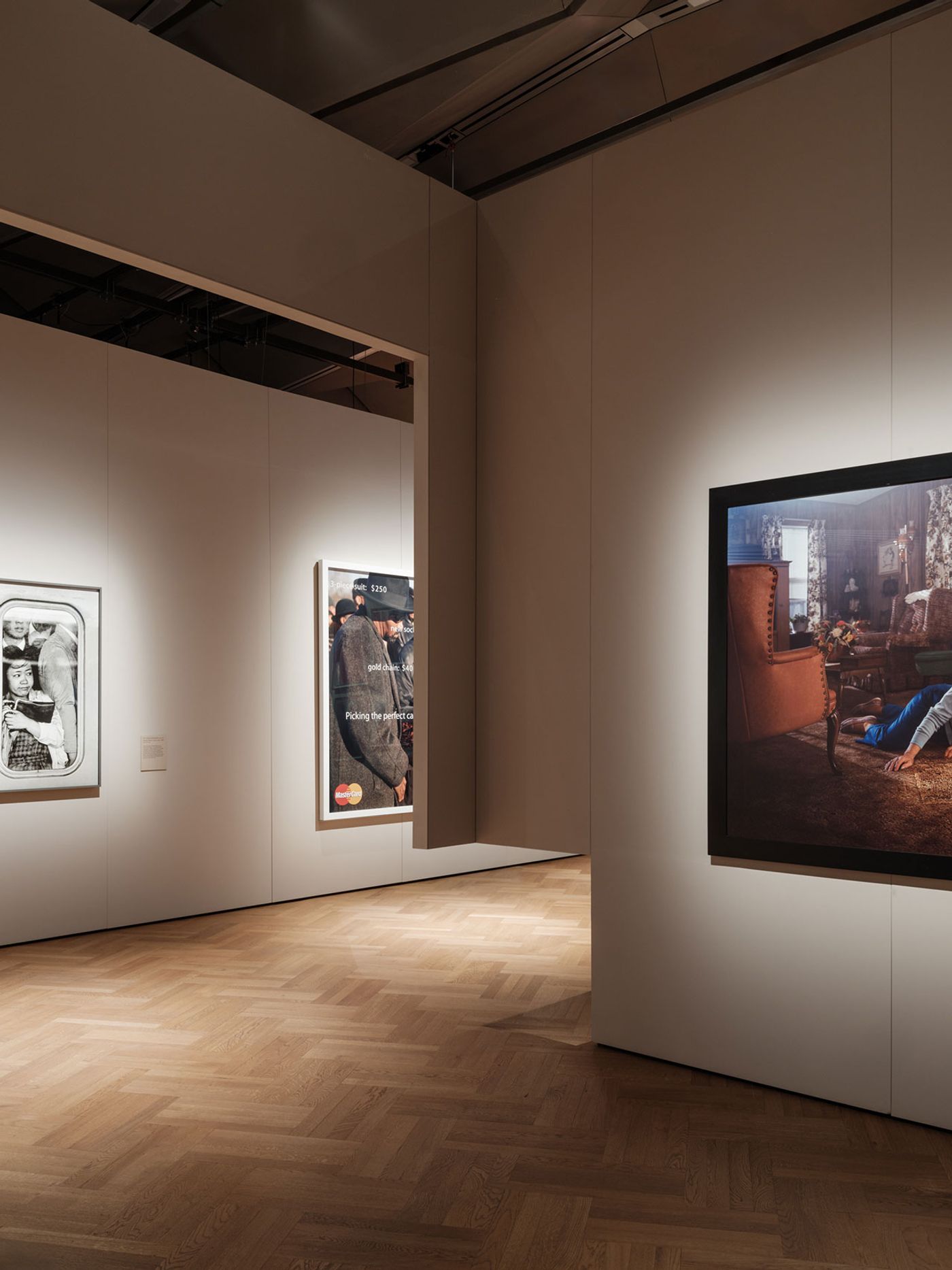
Installation view of "Fragile Beauty" at V&A, South Kensington. Photography © James Retief.
Elton began to collect photography when he left rehab in 1990, therefore the exhibition marks over 30 years of collecting. Intensely personal for both Elton and David, their collection is nevertheless universally compelling as the exhibition’s thematic diversity attests: the 300 photographs on display are divided into eight thematic sections which unfold across a sequence of unique galleries designed by architecture and design studio EBBA. Buffered by a series of threshold moments, the spaces are distinguished by different spatial concepts and colour schemes that capture the essence of each thematic section, whilst glimpses across to other galleries underscore the thematic connections at play.
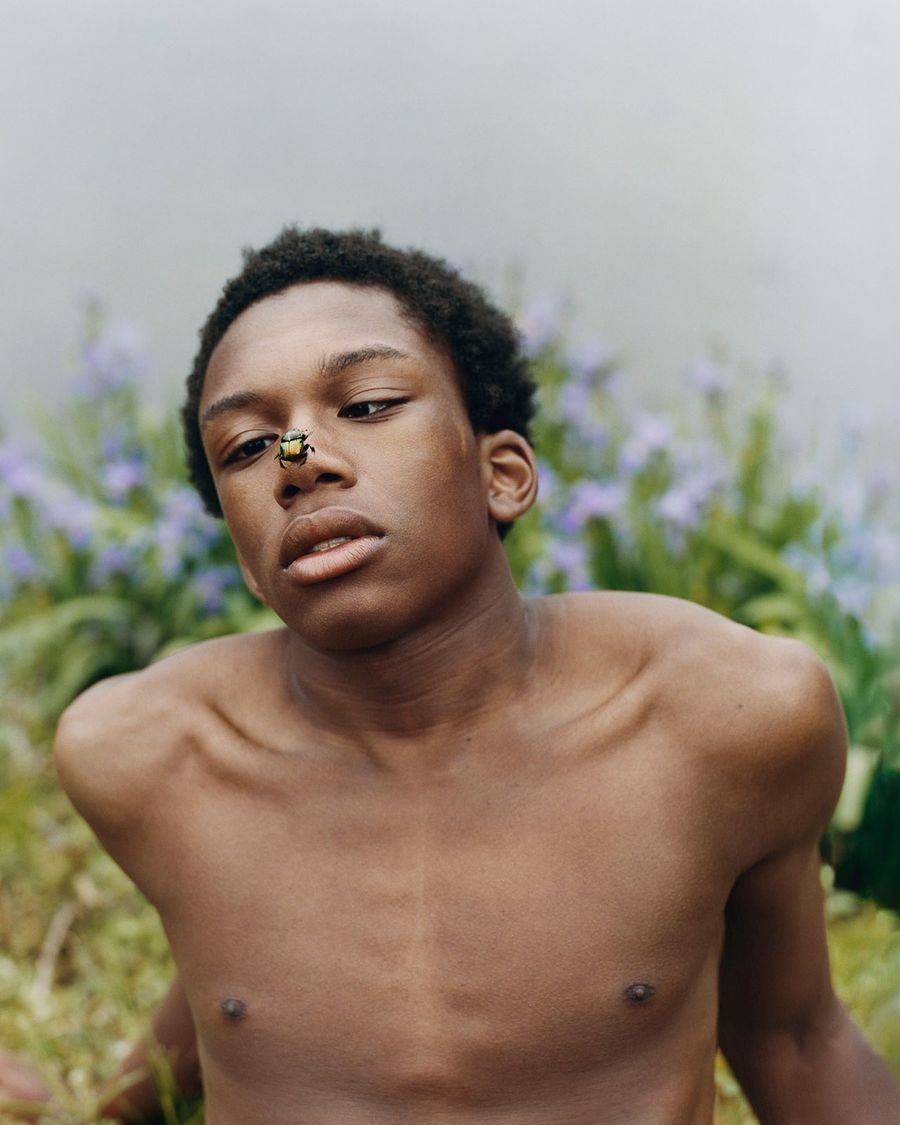
Tyler Mitchell, Simply Fragile, 2022.© Tyler Mitchell. Courtesy of the artist.
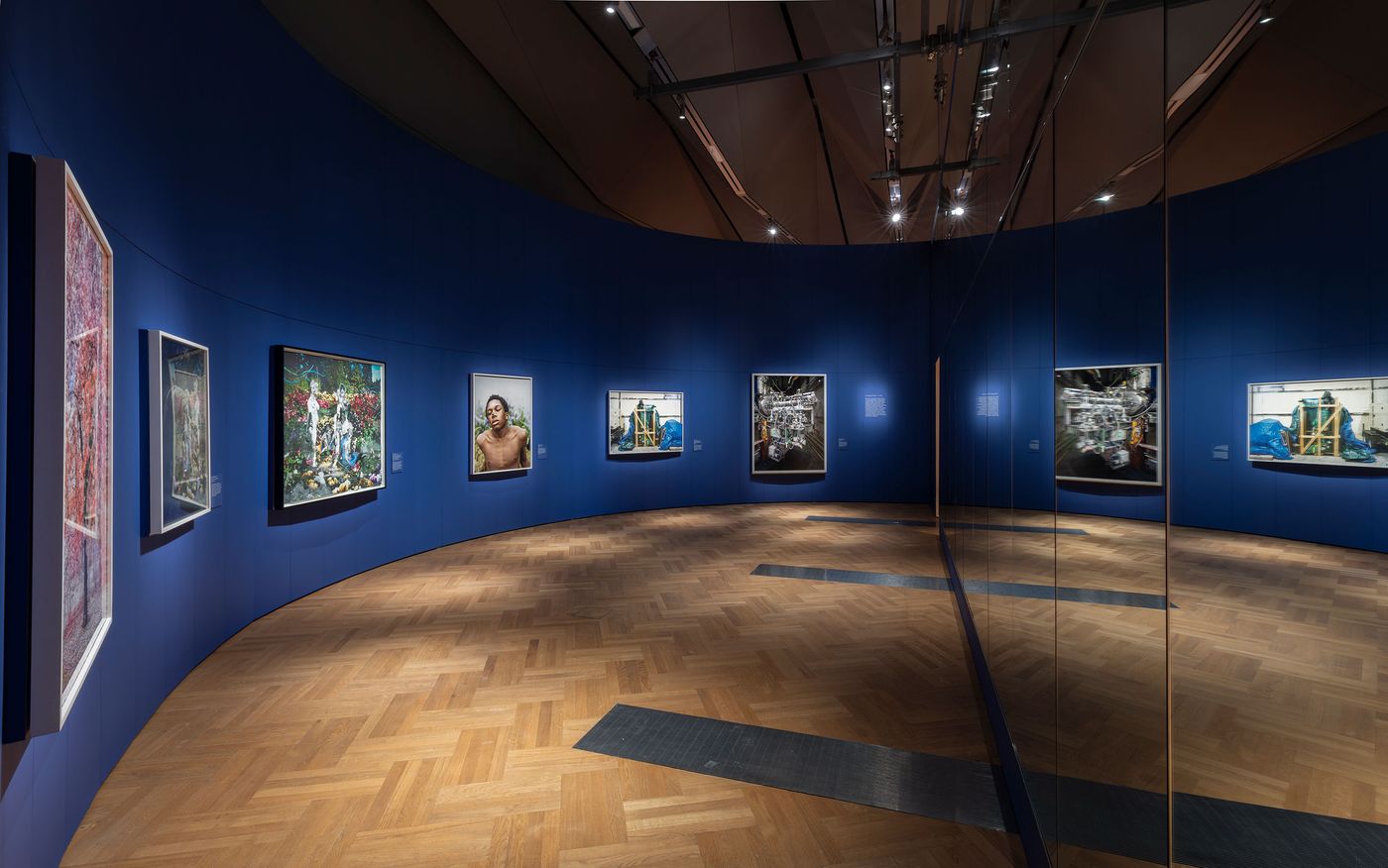
Installation view of "Fragile Beauty" at V&A, South Kensington.© Victoria and Albert Museum, London.
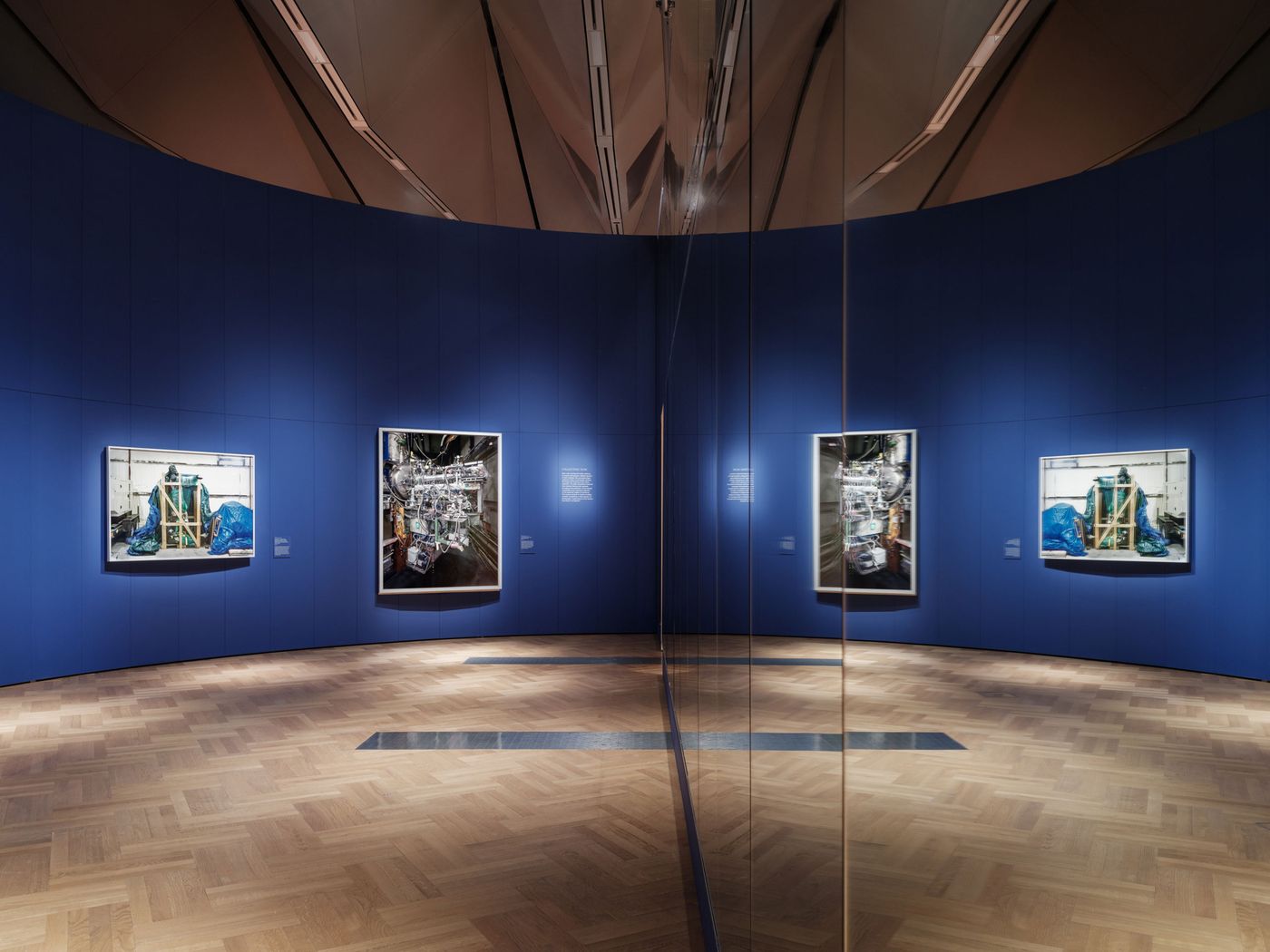
Installation view of "Fragile Beauty" at V&A, South Kensington. Photography © James Retief.
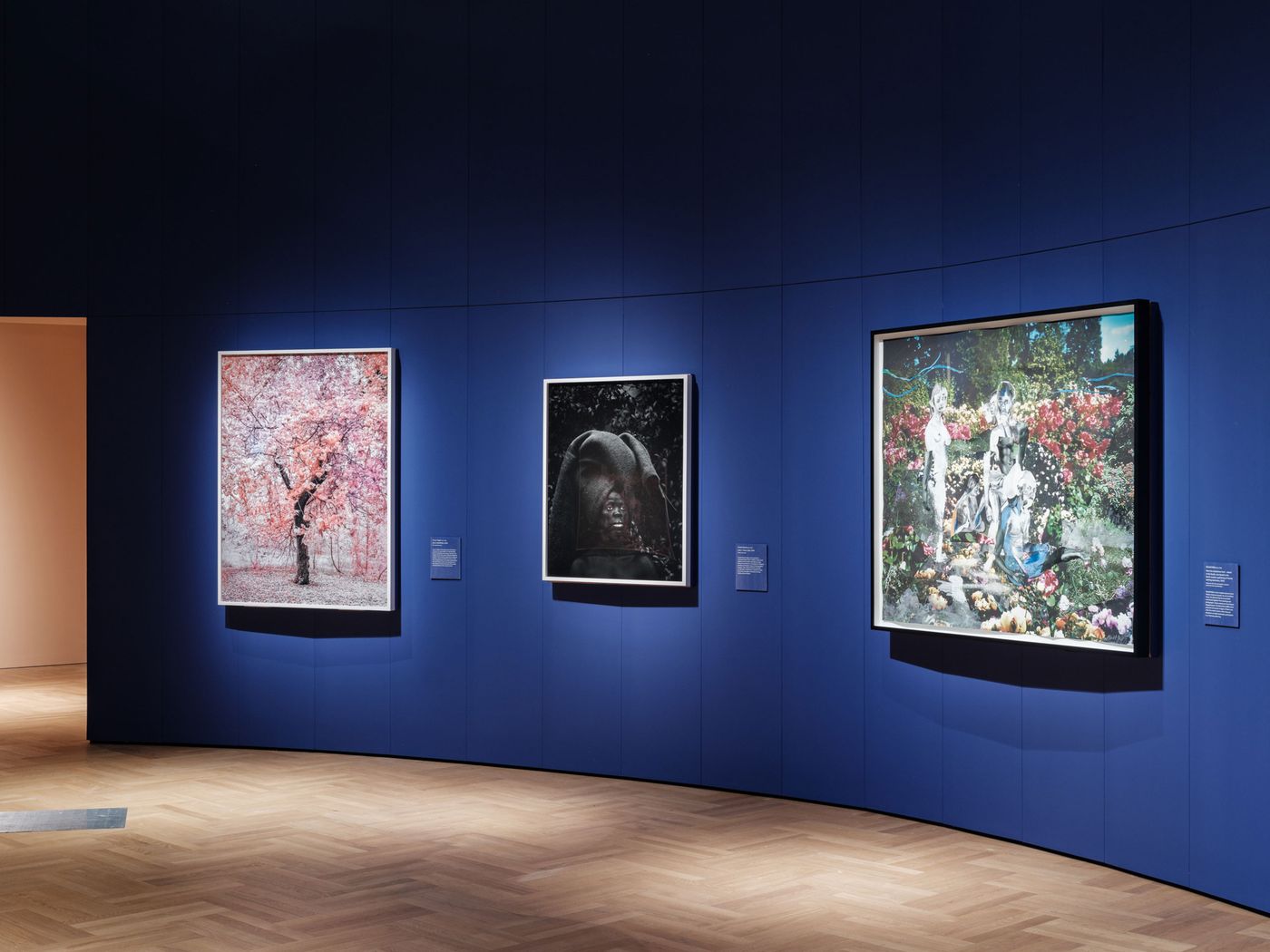
Installation view of "Fragile Beauty" at V&A, South Kensington. Photography © James Retief.
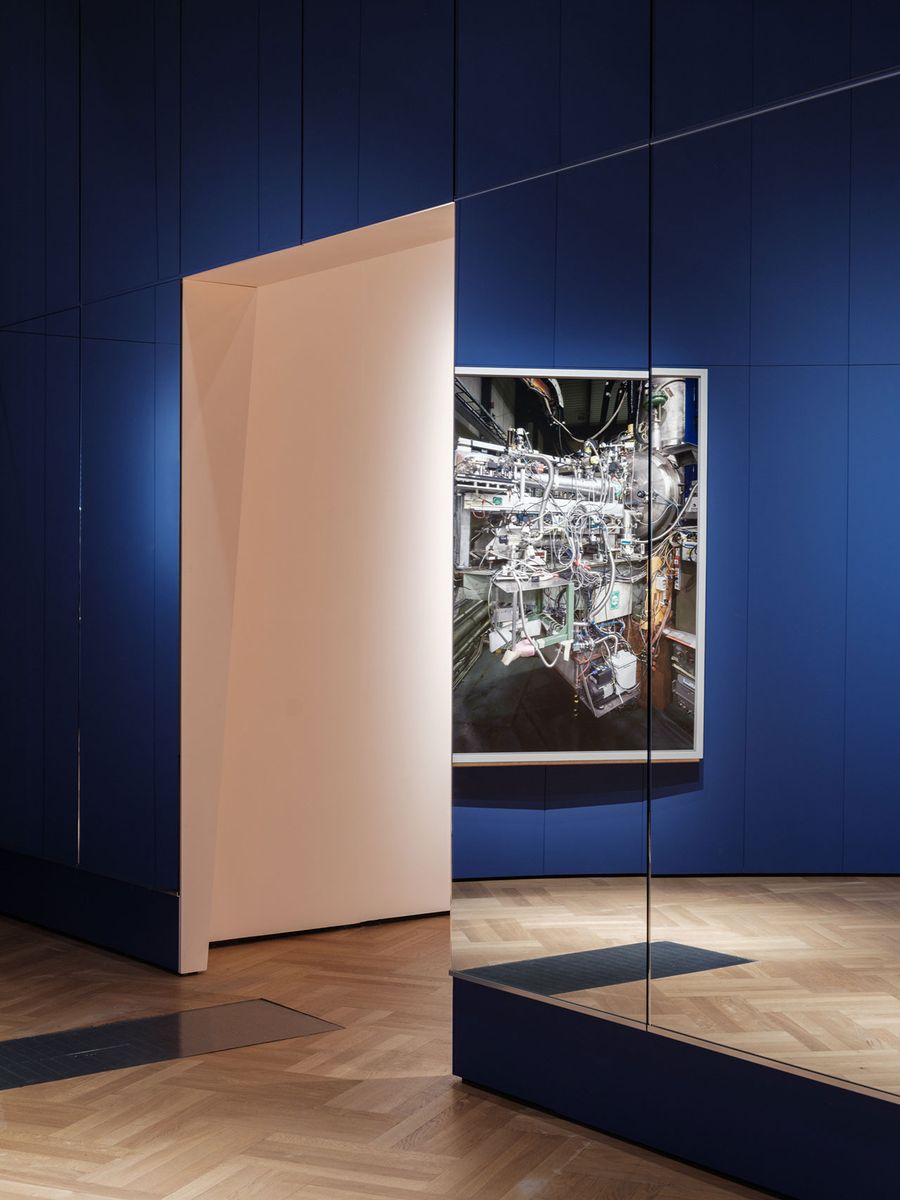
Installation view of "Fragile Beauty" at V&A, South Kensington. Photography © James Retief.
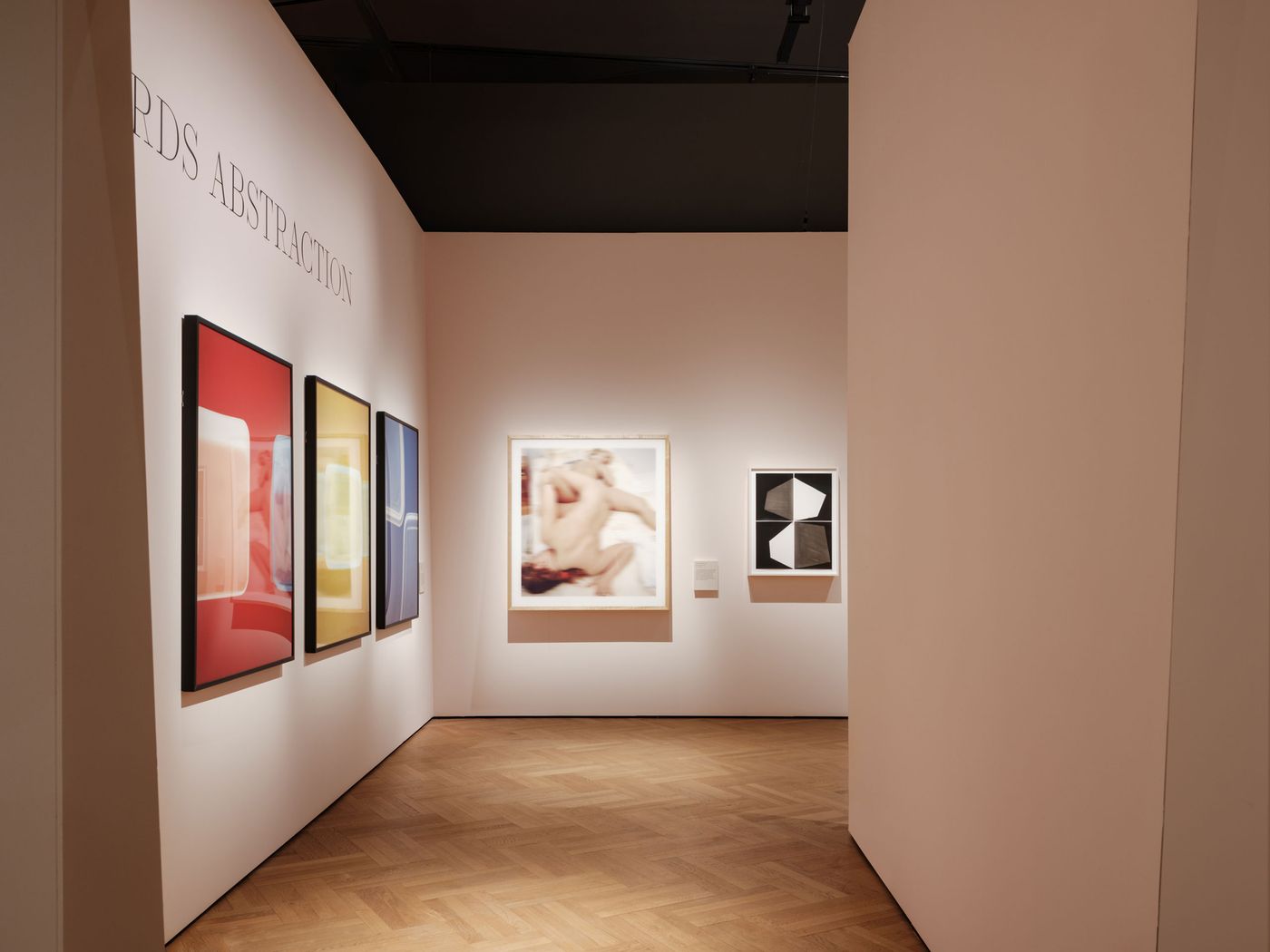
Installation view of "Fragile Beauty" at V&A, South Kensington. Photography © James Retief.
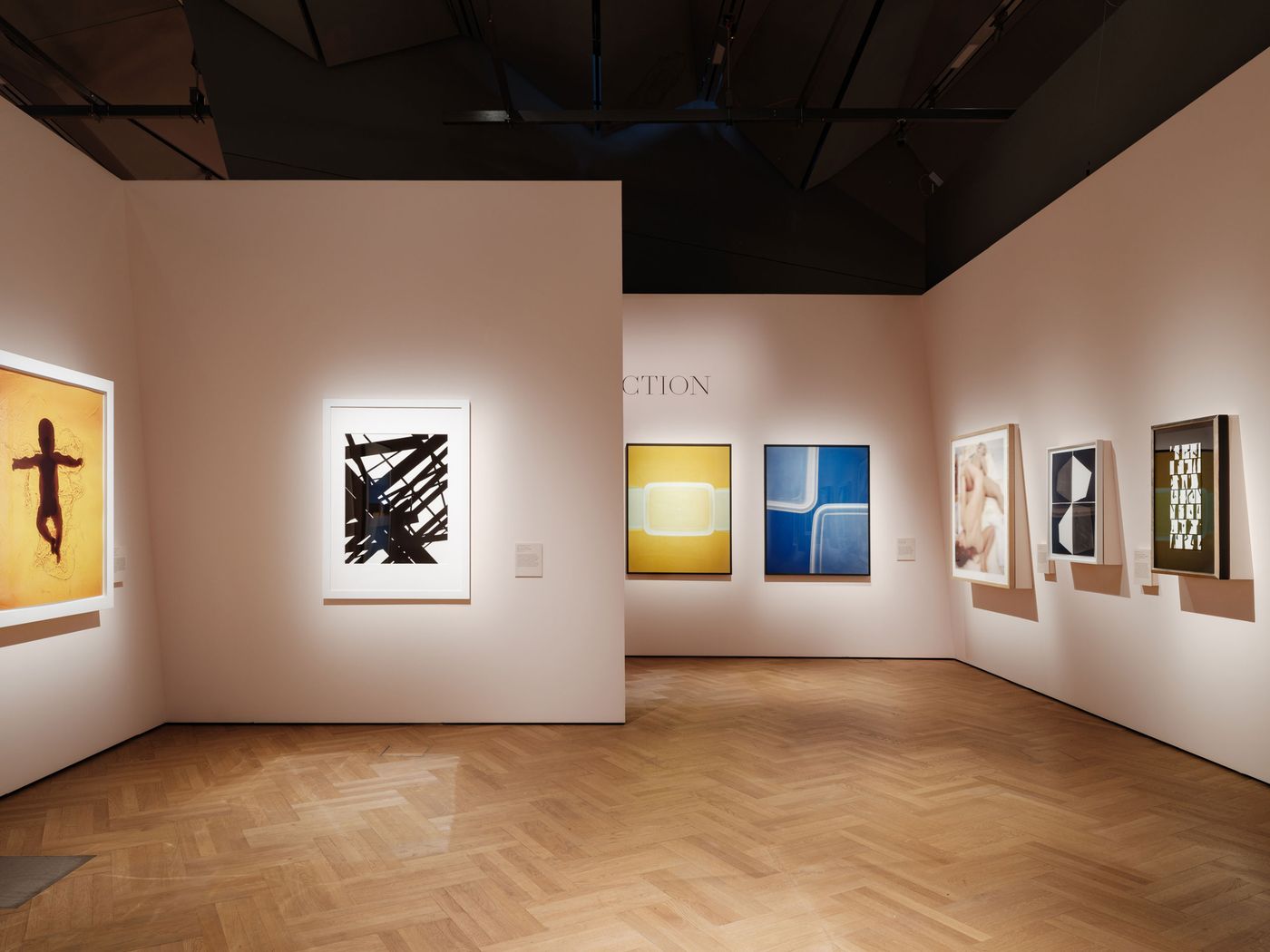
Installation view of "Fragile Beauty" at V&A, South Kensington. Photography © James Retief.

Tom Bianchi, Untitled, 368, Fire Island Pines, 1975-1983.© Tom Bianchi, Courtesy of Fahey Klein Gallery, Los Angeles.
Beginning with fashion, Elton’s initial inspiration and a continuing interest for David, the exhibition then moves on to portraits of some of the great musicians and actors from the last 70 years. Highlights include three images of Marilyn Monroe: one of Richard Avedon’s well-known early photographs of the actress taken in New York in 1957, Eve Arnold’s portrait of Monroe rehearsing her lines on the set of The Misfits in 1960, and an image from Bert Stern’s “The Last Sitting” photo shoot for Vogue which captures the star lost in thought two months before she died in 1962.
In the section titled “Desire”, Elton and David’s love of the male form takes centre stage, from subtle studio portraiture dating back to the 1950s to more explicit images in contemporary works. Further on, the work of queer or queer-identifying artists attest to the couple’s interest in photographers combating sexual oppression, racism or other forms of persecution. Highlights include Peter Hujar’s unflinching 1974 portrait of American transgender actress Candy in her hospital bed and Tom Bianchi’s Fire Island Pines series (1975-1983) celebrating gay joy at a time when homosexuality was still illegal.
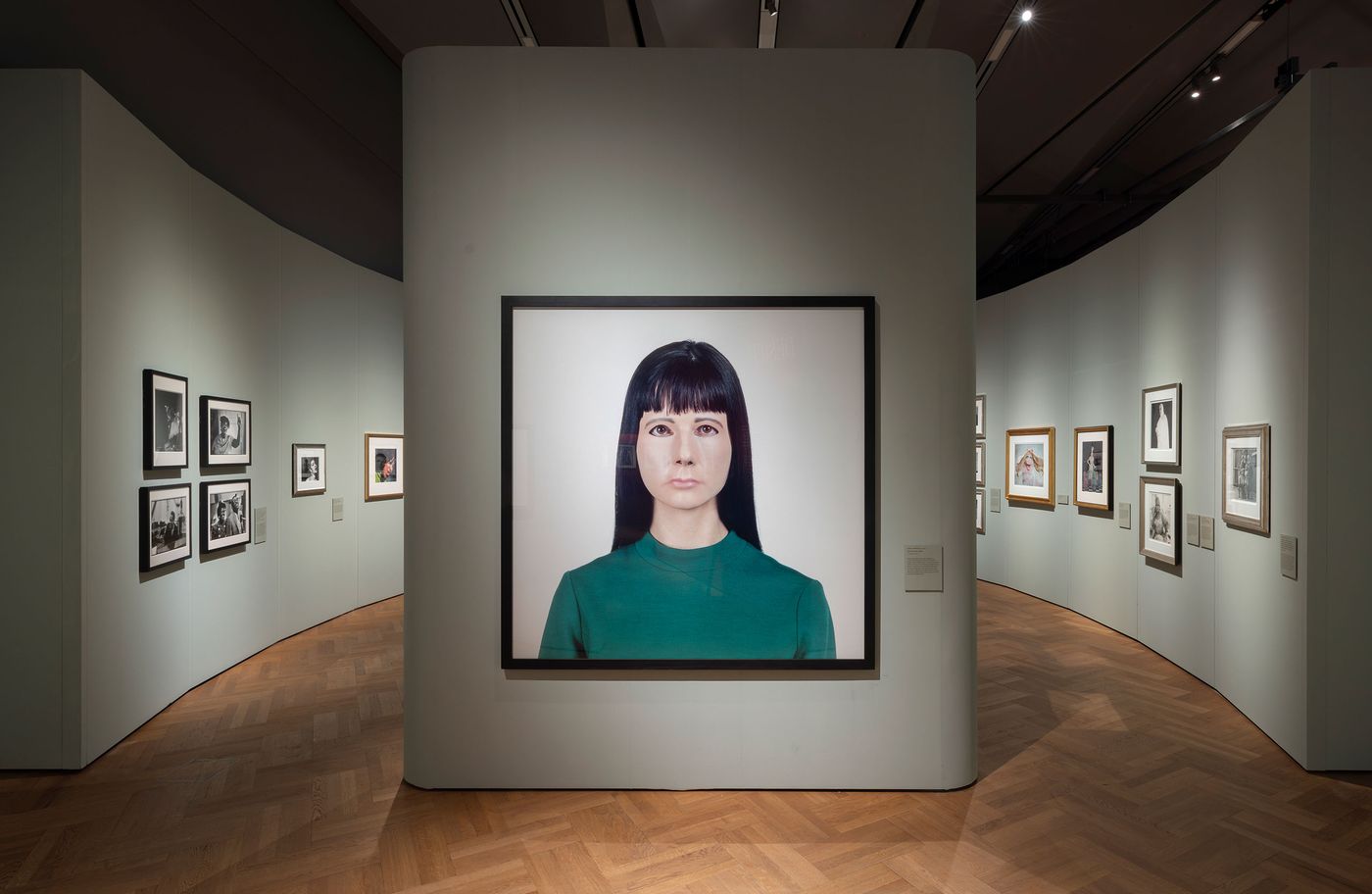
Installation view of "Fragile Beauty" at V&A, South Kensington.© Victoria and Albert Museum, London.

Peter Hujar, Divine at the Metropolitan Museum Russian Opening (III), 1976.© 2023 The Peter Hujar Archive, LLC, Artists Rights Society (ARS), New York, DACS, London.

Peter Hujar, Candy Darling on her Deathbed, 1975.© 2023 The Peter Hujar Archive, LLC Artists Rights Society (ARS), New York.
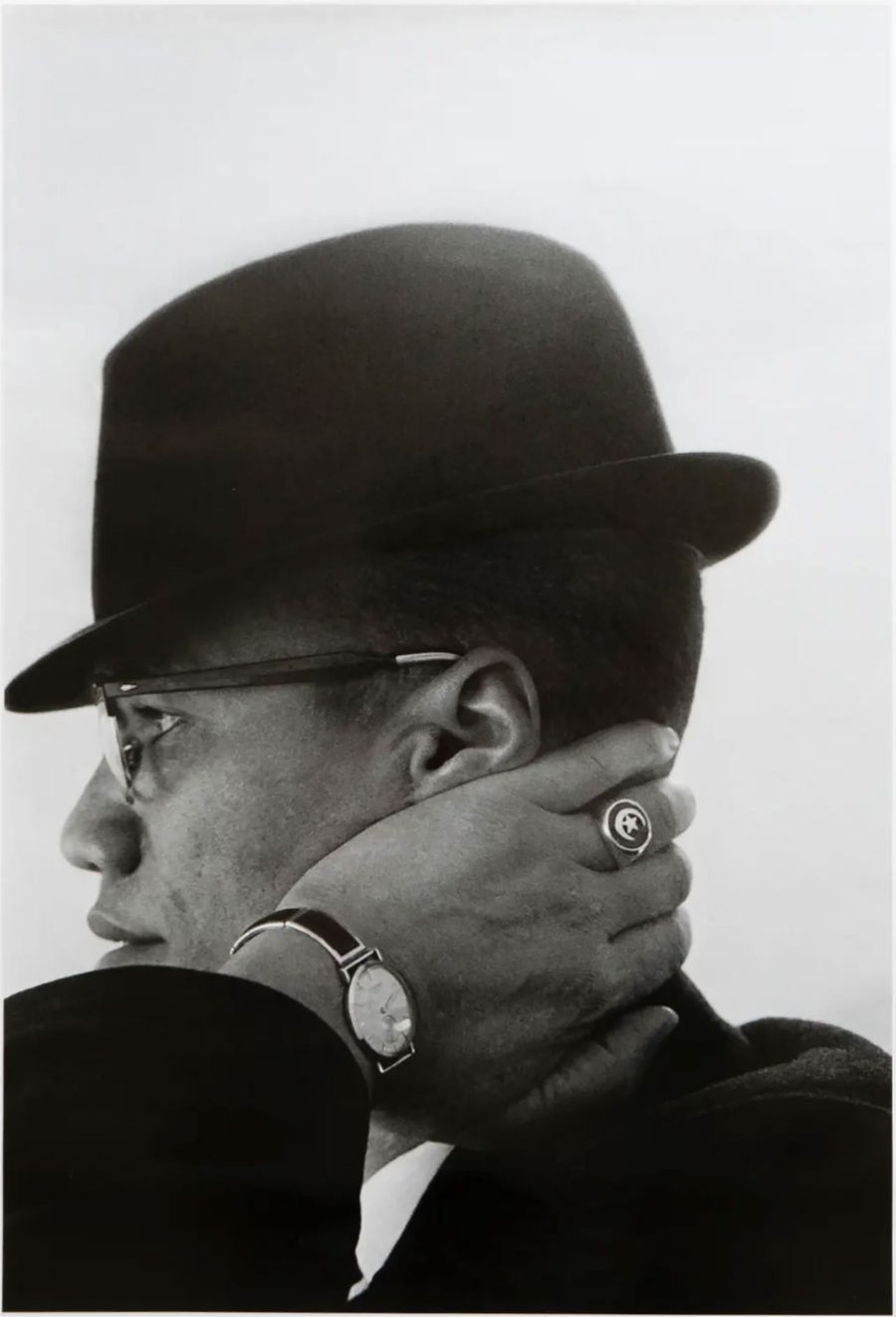
Eve Arnold, Malcolm X, Chicago, Illinois, USA, 1962.© Eve Arnold Magnum Photos.
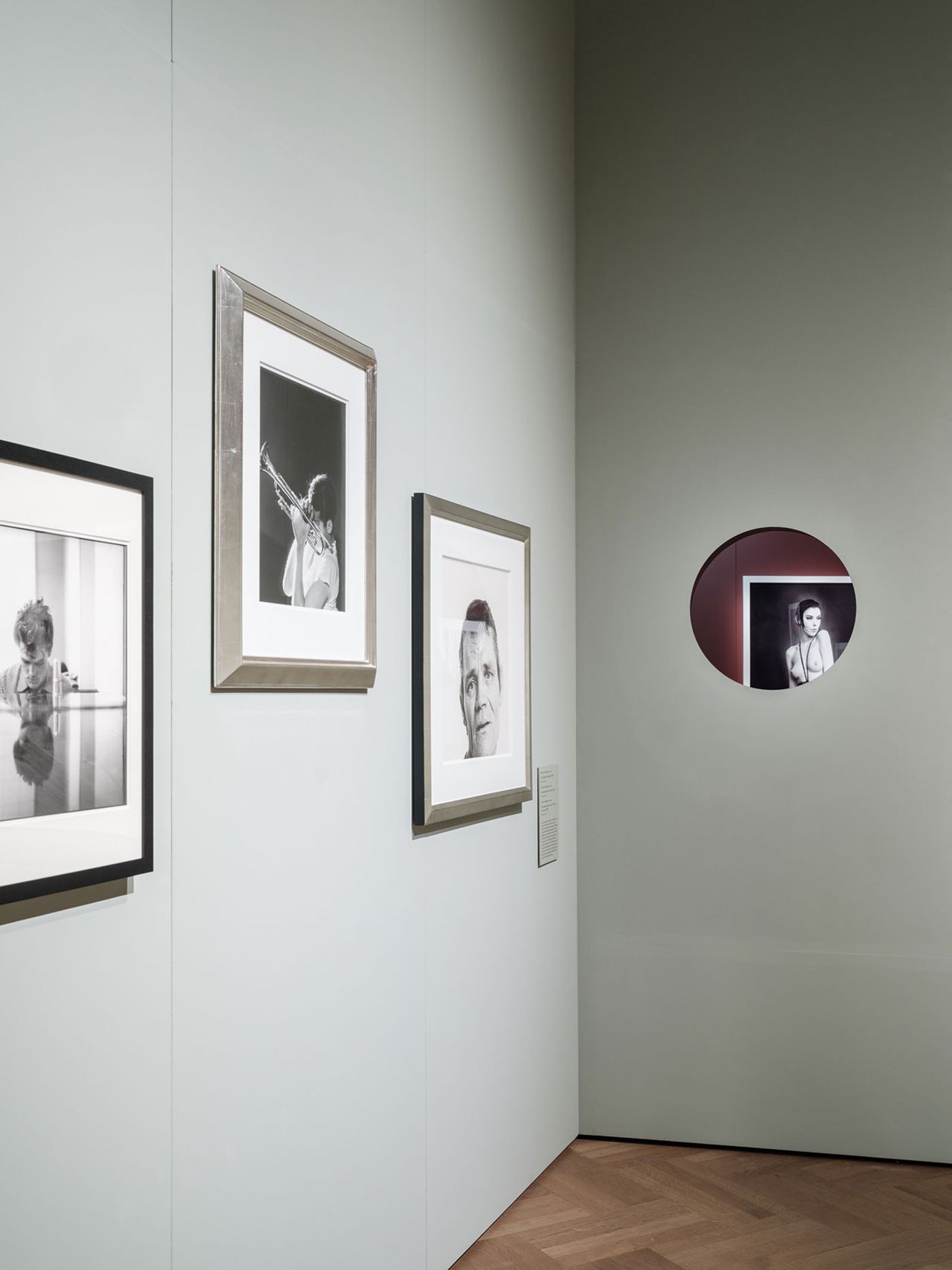
Installation view of "Fragile Beauty" at V&A, South Kensington.Photography © James Retief.
Key moments in American history are on display in “Reportage”, from images of the Civil Rights movement of the 1960s, AIDS activism in the 1980s, to the events of 11 September 2001, the latter hauntingly encapsulated in Richard Drew’s “The Falling”, a harrowing image of a man plummeting to earth when the Twin Towers were hit. As poignant is Boris Yaro’s photograph capturing the moment of Robert F. Kennedy’s assassination in Los Angeles in 1968, and an image taken by Associated Press photographer Julio Cortez at the protests in Minneapolis following the murder of George Floyd in May 2020 which depicts a lone protester carrying an upside-down U.S. flag next to a burning building.

Bruce Davidson, Black Americans.New York City, 1962.© Bruce Davidson Magnum Photos.
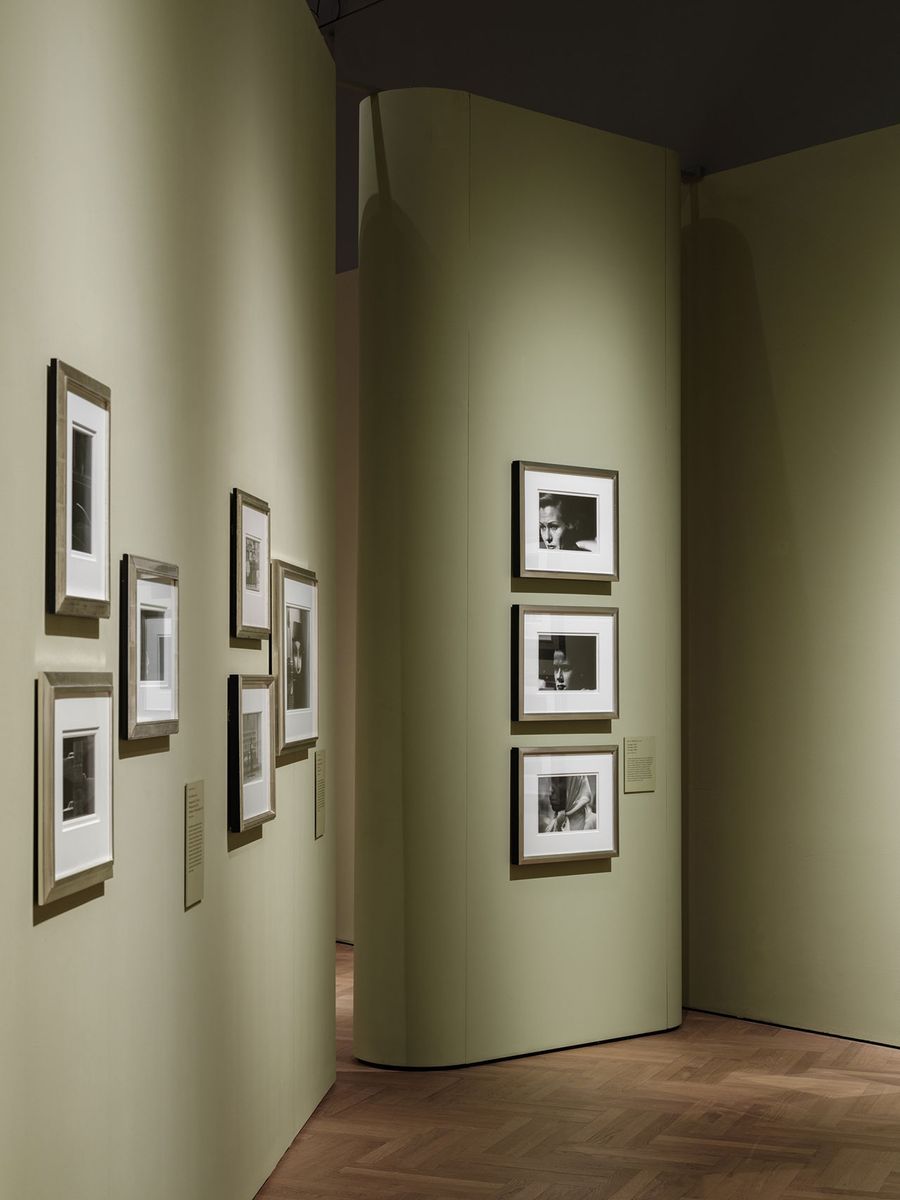
Installation view of "Fragile Beauty" at V&A, South Kensington. Photography © James Retief.
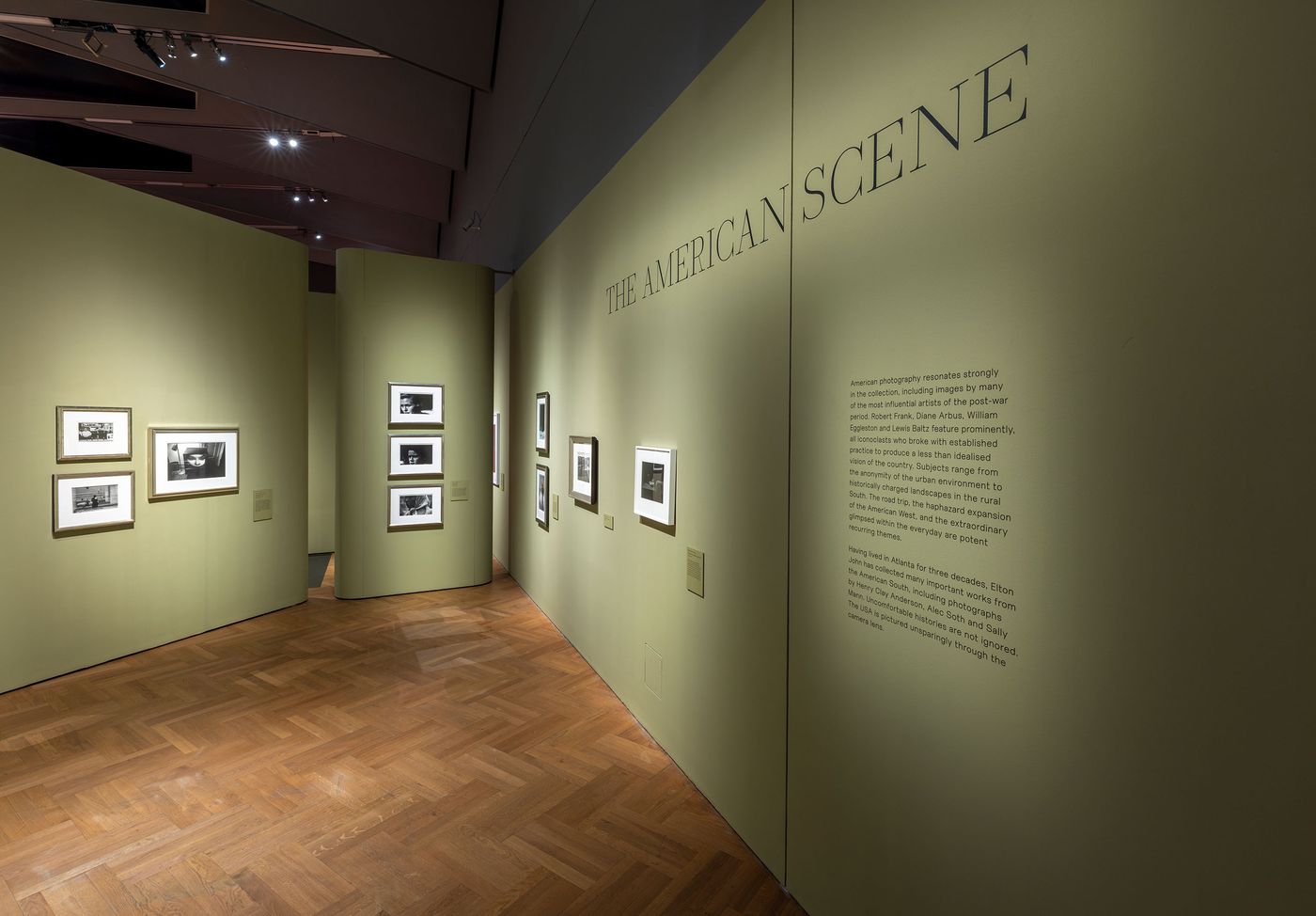
Installation view of "Fragile Beauty" at V&A, South Kensington .© Victoria and Albert Museum, London.
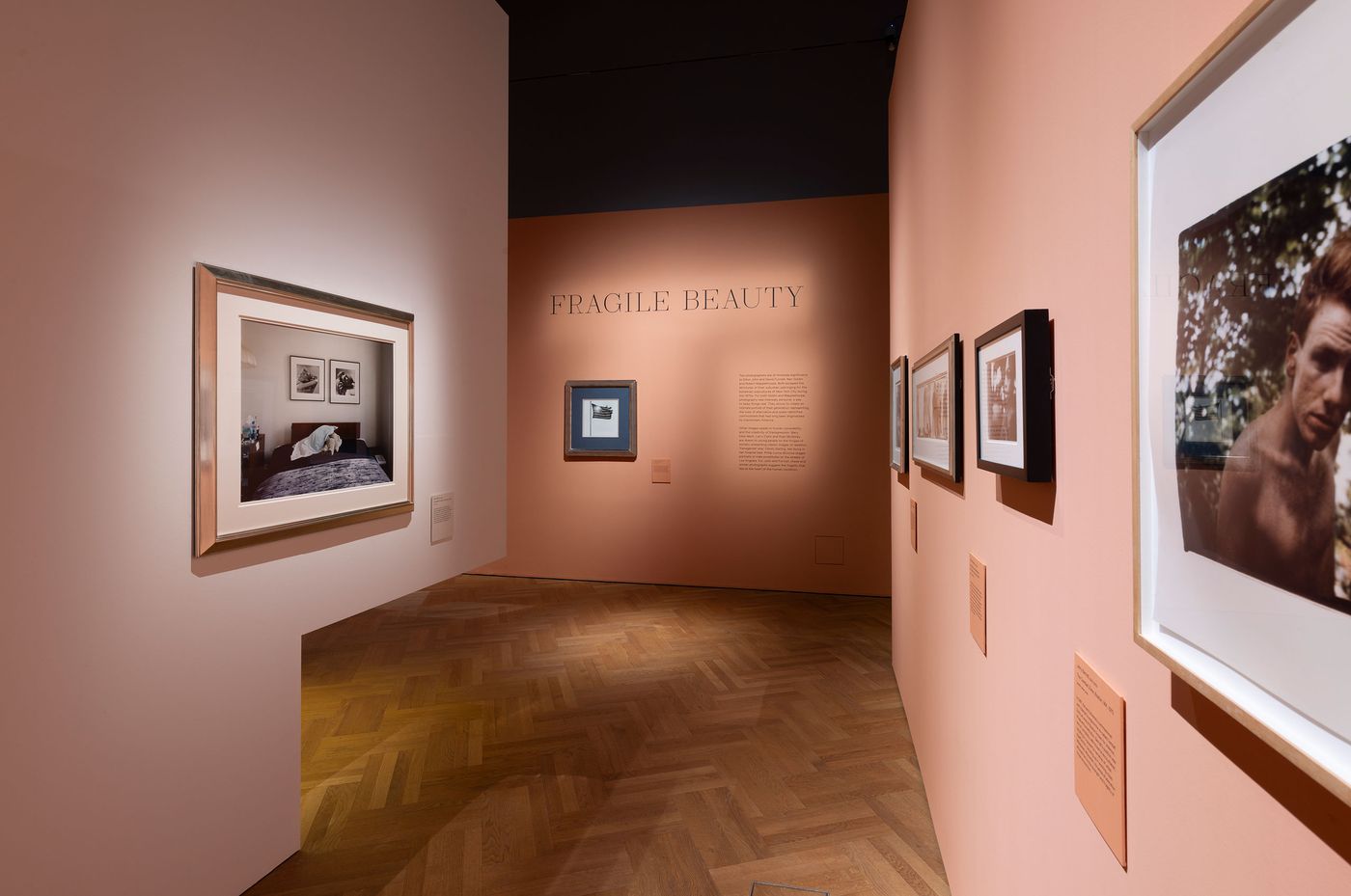
Installation view of "Fragile Beauty" at V&A, South Kensington. © Victoria and Albert Museum, London.
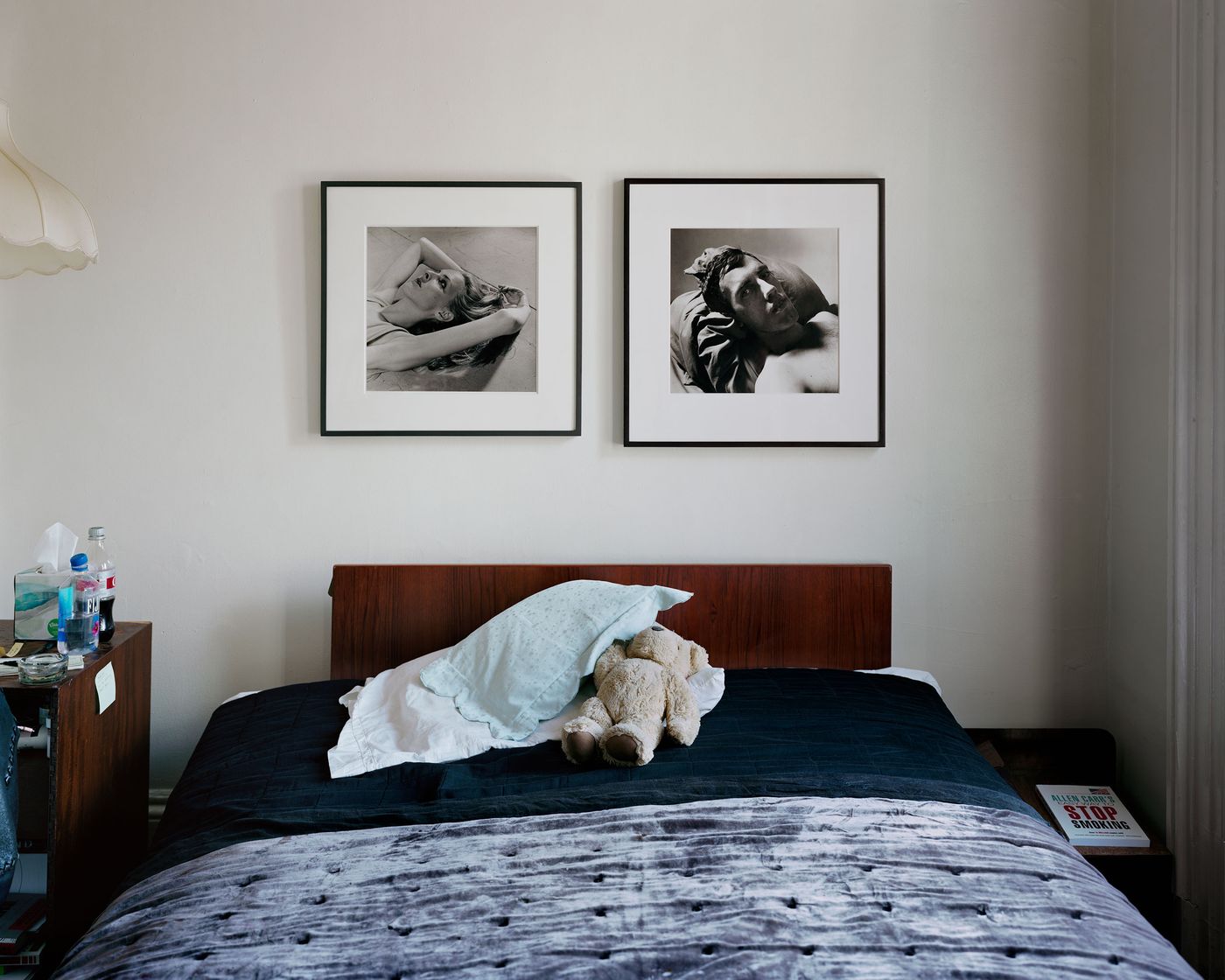
Alec Soth, Nan's Bed, Brooklyn, New York, 2018. © Alec Soth. Courtesy, Sean Kelly.
Also on display is Nan Goldin’s "Thanksgiving" series, a 149-image collection, shown here in its entirety, which captures some of the most intimate and emotional moments in Goldin and her community’s lives from 1973 to 1999. Exhibited in a packed floor-to-ceiling installation inside a cubic structure, visitors are literally immersed in Goldin’s evocative documentation of euphoria, sensuality, youth, and abuse.

Nan Goldin, Clemens, Jens and Nicolas Laughing at Le Pulp, Paris, 1999.© Nan Goldin. Courtesy of Nan Goldin and Gagosian.

Nan Goldin, Jimmy Paulette and Taboo! In the Bathroom, 1991.© Nan Goldin. Courtesy of Nan Goldin and Gagosian.
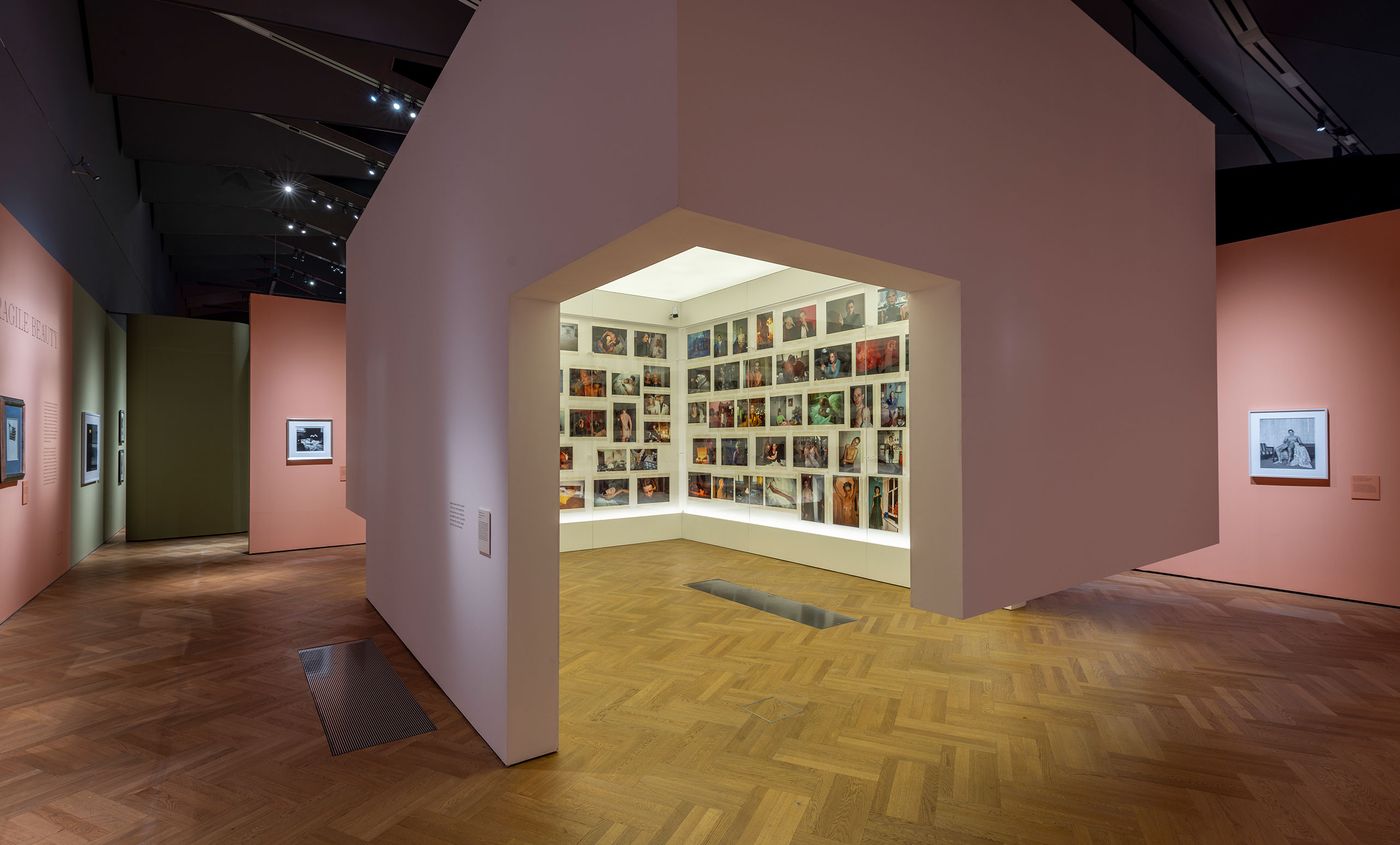
Installation view of "Fragile Beauty" at V&A, South Kensington.© Victoria and Albert Museum, London.
Scattered throughout the exhibition are a string of uncanny self-portraits. Part mythological faun, part demonic creature, Robert Mapplethorpe’s iconic horned self-portrait (1985) encapsulates the opposing forces of good and evil that coexisted in him - and perhaps in all of us. Just as unnerving, Turner Prize winner Gillian Wearing’s self-portrait (2000), wherein she wears a mask of her own likeness, asks if we can ever really know somebody else, while Japanese artist Yasumasa Morimura challenges the associations we have with cultural icons by morphing into Albert Einstein for his 2007 self-portrait that recreates Einstein’s 1951 world-famous image with his tongue sticking out.
Not far from Morimura’s whimsical self-portrait is David LaChapelle’s 1999 portrait of Elton John. Surreally depicted with two fried eggs on his face, the photograph speaks to Elton’s sense of irreverence and humour and embodies the power of photography to capture the ineffable essence of the moment. It’s also a reminder that at the centre of “Fragile Beauty” is Elton himself, for it’s his and David’s deep-seated passion for the medium of photography that has driven the creation of such an unparalleled collection, which this exhibition so poignantly highlights.
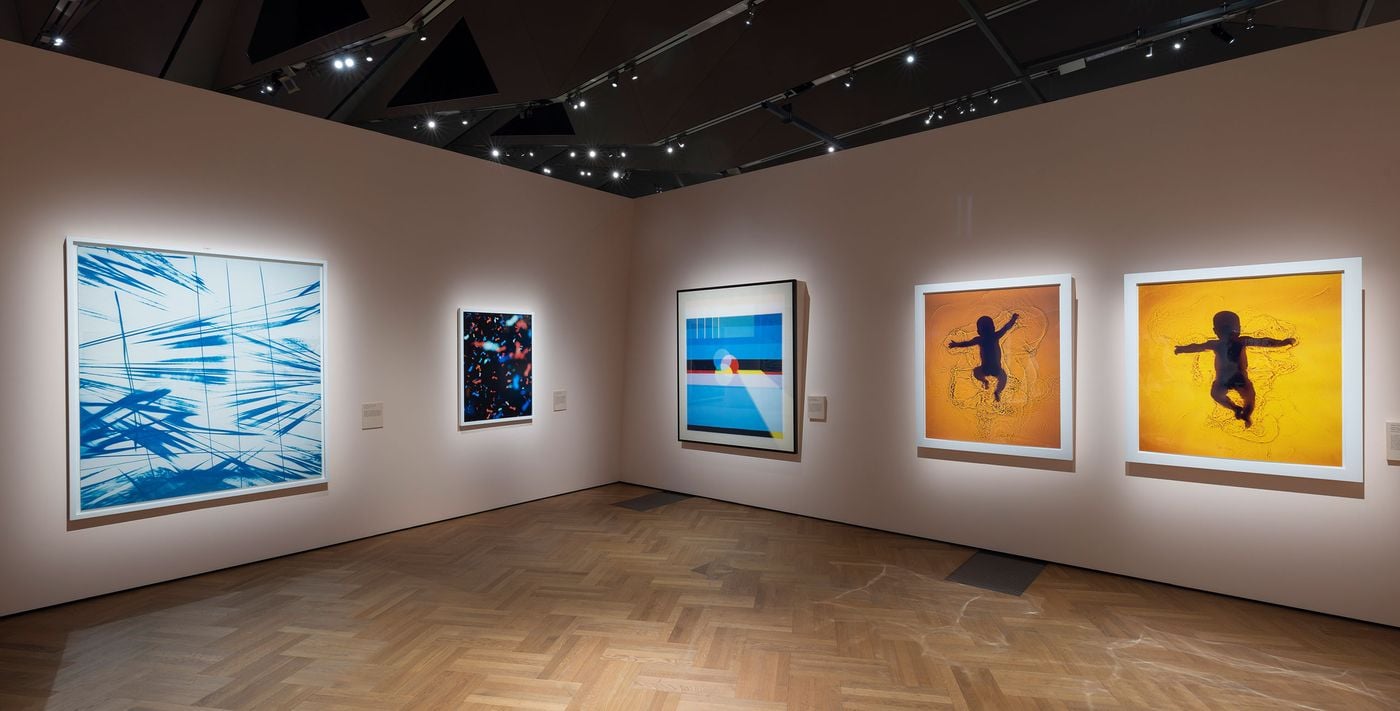
Installation view of "Fragile Beauty" at V&A, South Kensington.© Victoria and Albert Museum, London.
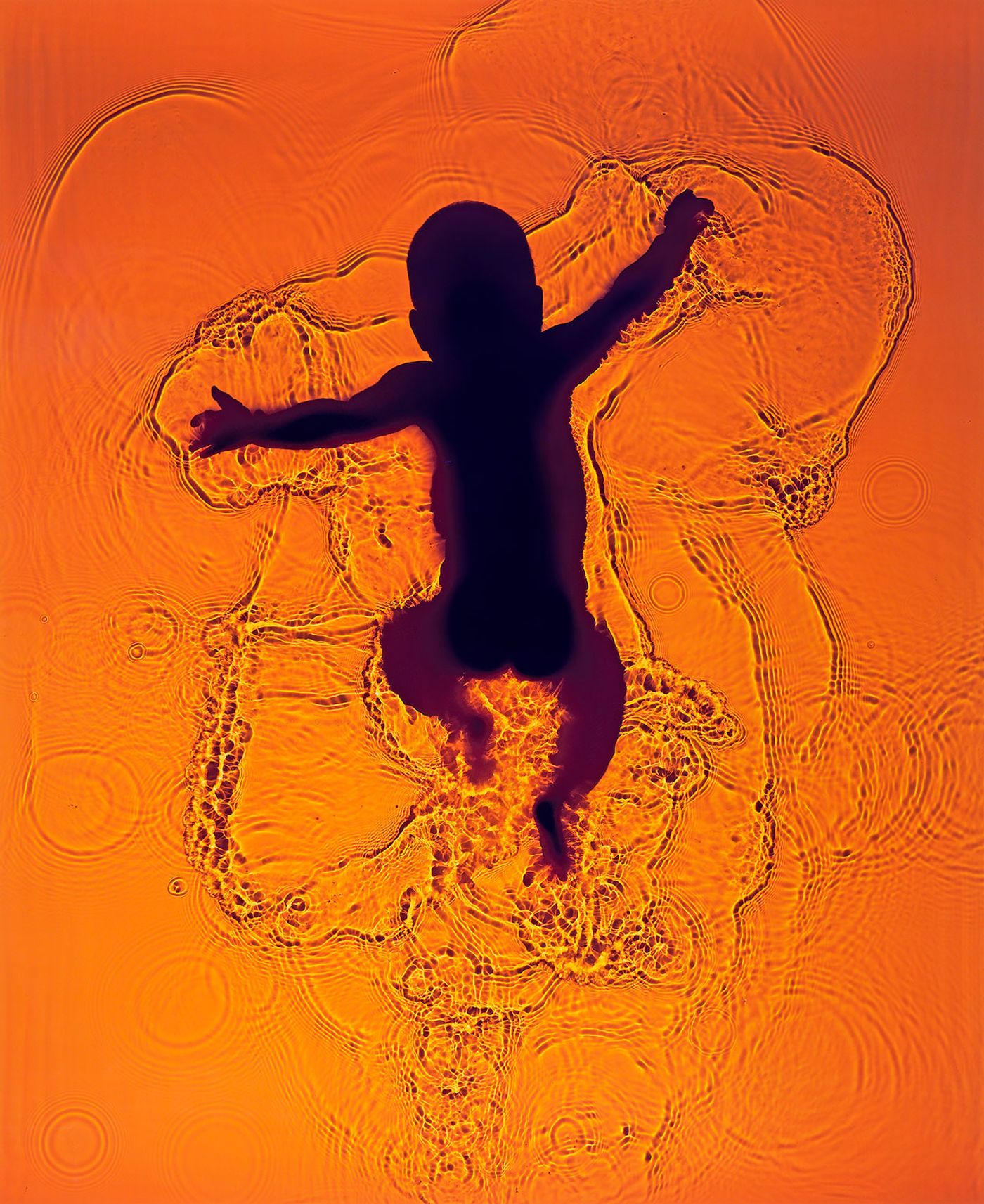
Adam Fuss, Zachary, 2011.© Adam Fuss. Courtesy of the artist and Fraenkel Gallery San Francisco.

Robert Mapplethorpe, Poppy, 1988. © Robert Mapplethorpe Foundation. Used by permission.
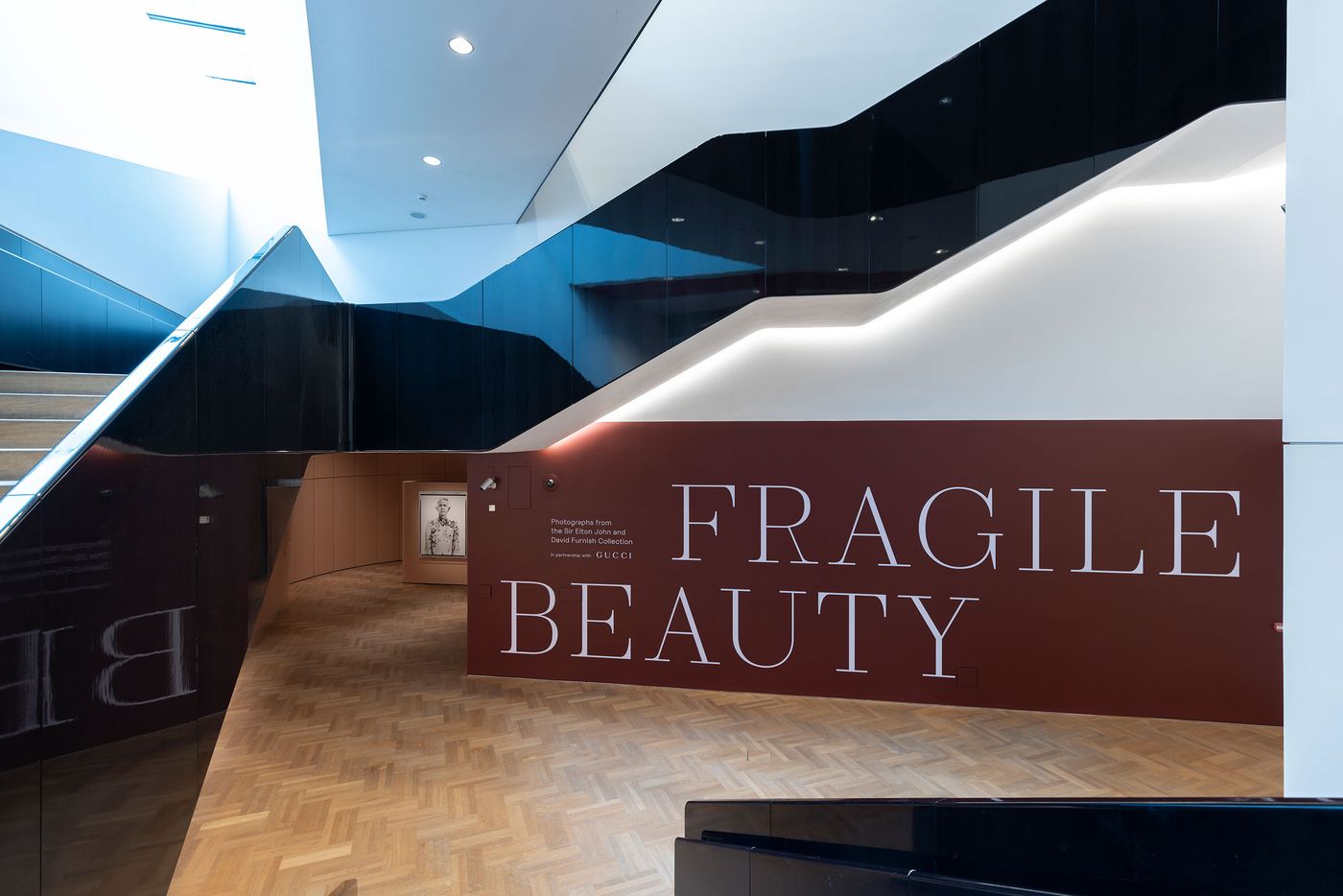
Installation view of "Fragile Beauty" at V&A, South Kensington. © Victoria and Albert Museum, London.
